THE KHWARAZMIAN EMPIRE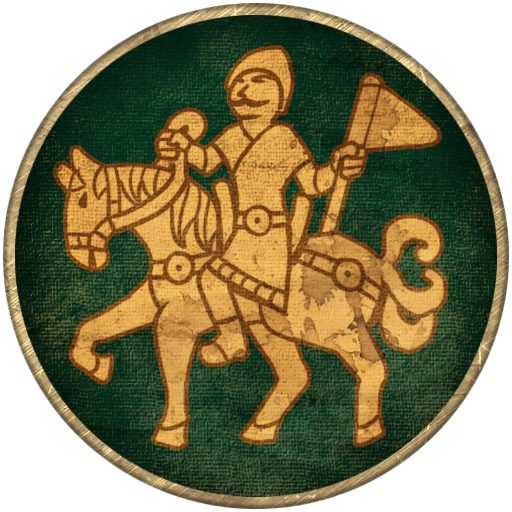
Former governors of the Seljuk sultanate, the Mamluk dynasty of the Khwarazmids crashed onto the scene under Khwarazmshah Tekesh, father of Muhammad II. Taking advantage of the collapse of the Seljuk empire, the Khwarazmshahs had taken center stage in the battle for Khorasan along with the Qara Khitay and Ghurids. Most importantly, Tekesh forged an alliance with the pagan Turkish tribes that had migrated into Khwarazm, marrying the Qangli princess Terken Khatun, granting the Khwarazmid realm access to a large contingent of elite soldiers, whose brutality only matched their lust for plunder. Tekesh's reign would also be the start of a strenuous relationship with the Sunni Caliph in Baghdad, who had recently found independence. Tekesh's son, Ala ad-Din Muhammad II Iskandar-i Sani (Alexander the Second), would be the one to make Khwarazm famous in the history books, defeating the Ghurids, Iranian Seljuks, Bavandids and just recently, in 1212, throwing off the Qara Khitay yoke and forming arguably the greatest power in the Muslim world.
Muhammad would grow the realm furthermore until his troops, sent to subjugate the Caliph, would face nature's wrath in the Zagros mountains and halt the invasion. His handling of the Mongol situation would see his realm quickly destroyed and he would die soon after the fall the Sarmarqand in an island on the Caspian sea. His son and heir, Jalal ad-Din Manguberdi, would see more success, defeating the Mongols at Parwan before needing to escape to Delhi, where he would eventually build back a force to invade his brother's realm in Fars and continuing further with success against the Caliphate and destroying the Georgian army, sacking their capital and butchering the population. His death by an assassin's hand would end the relatively brief Khwarazmid chapter in Iran's history.
The Khwarazmids are relatively unpopular with their new subjects in the Iranian plateau and their playstyle revolves around using their large and effective cavalry force. Their native infantry force is extremely limited in the first tier and as such, the early campaign will require large use of regional units.
Early Era
Foot Missile Units
Rayat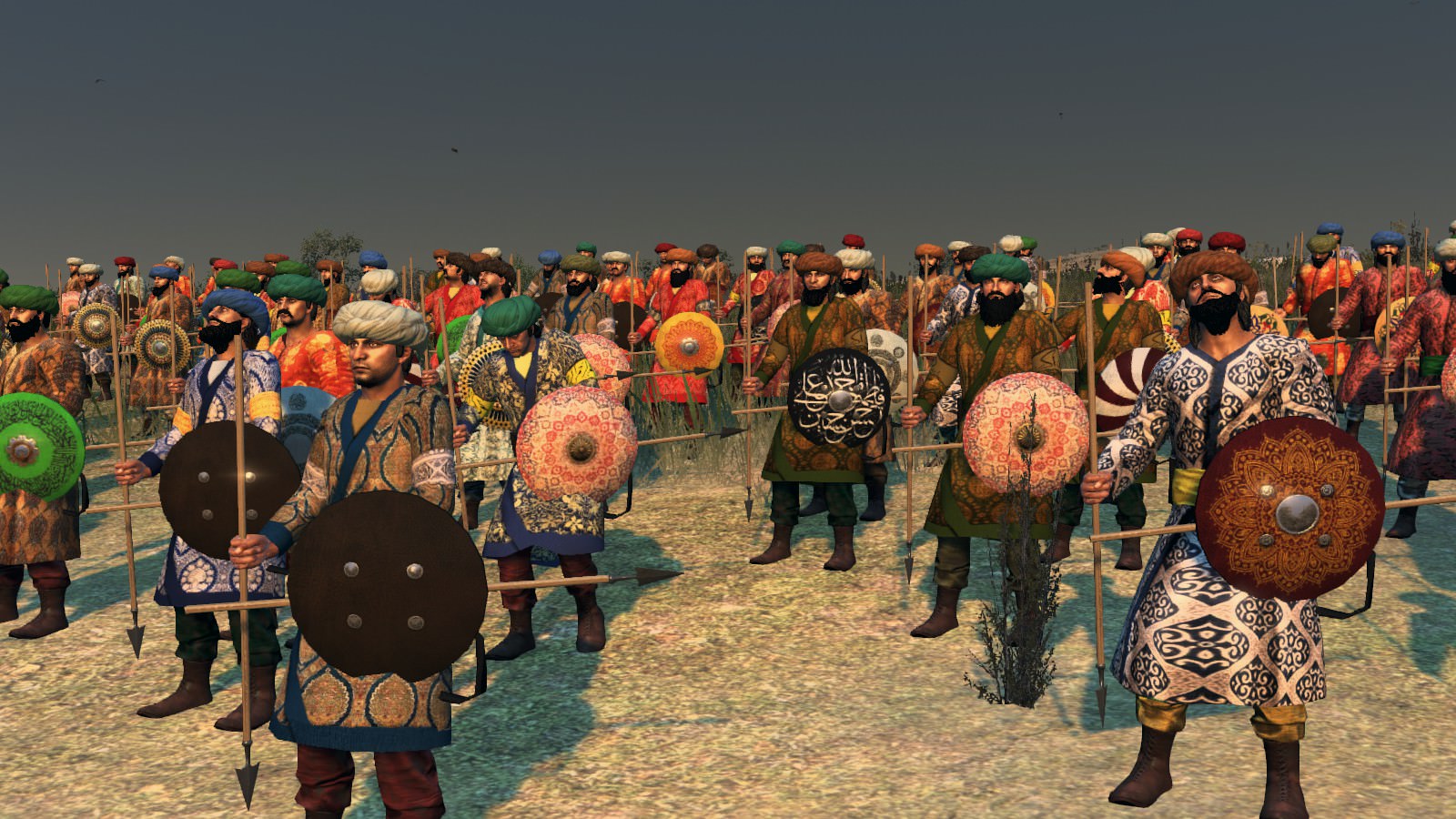
Ra'yat (subjects) was used as a catch-all term for lower classes in Iranian-speaking regions. Like in any medieval society, these people formed an important pool of manpower in case of emergency, but ill-equipped and lightly trained individuals were rarely called upon for campaigns.
Charkh Infantry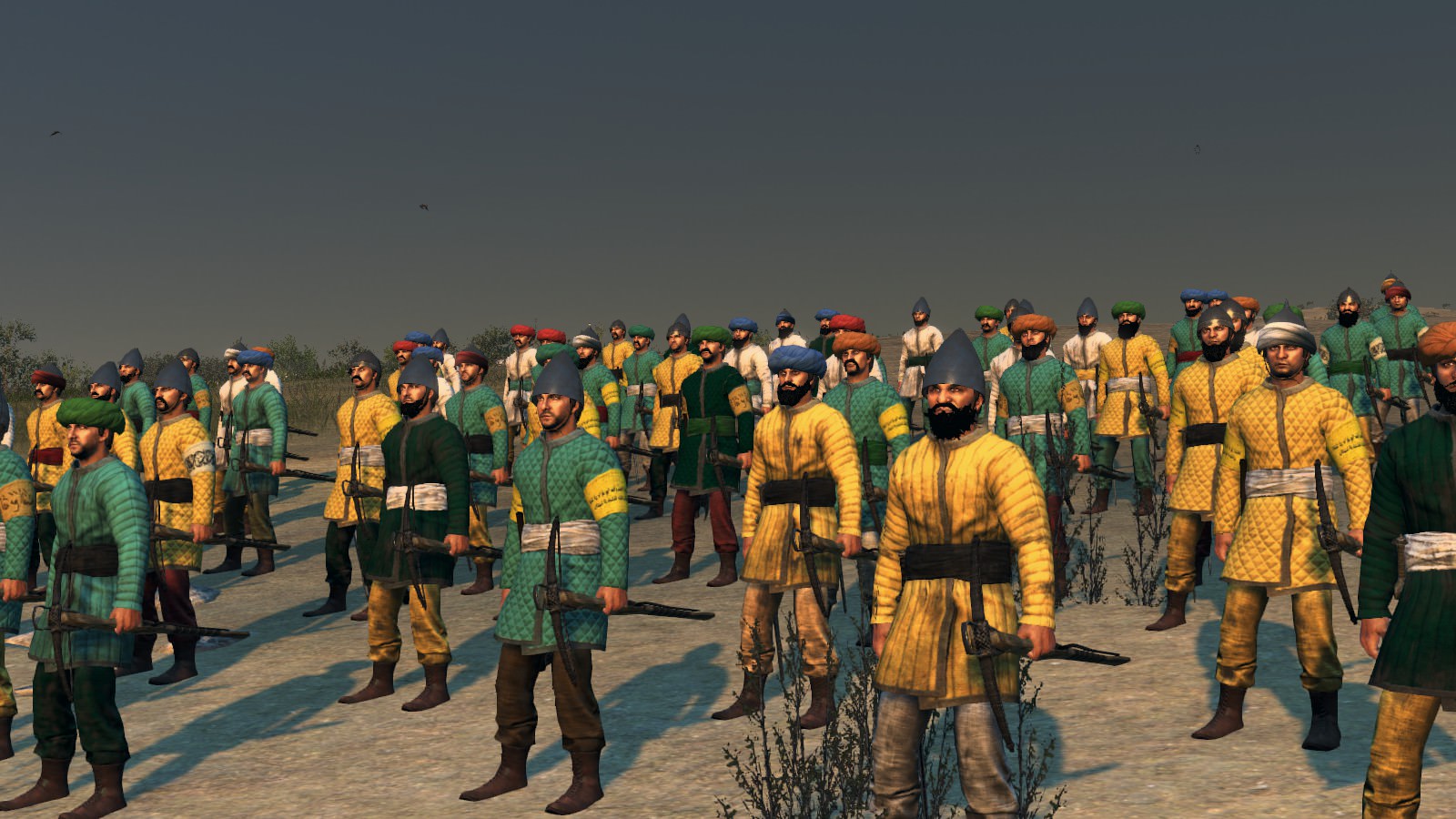
The crossbow (charkh) was an important weapon in the Middle East and the Greater Iranian region, just like in Europe. The composite design allowed for greater draw weight and penetrative power than even the powerful Turkish bow, while requiring much less training. Larger versions, similar to ancient scorpions, would be mounted on walls, and even on camelback, acting like field artillery.
Ghazi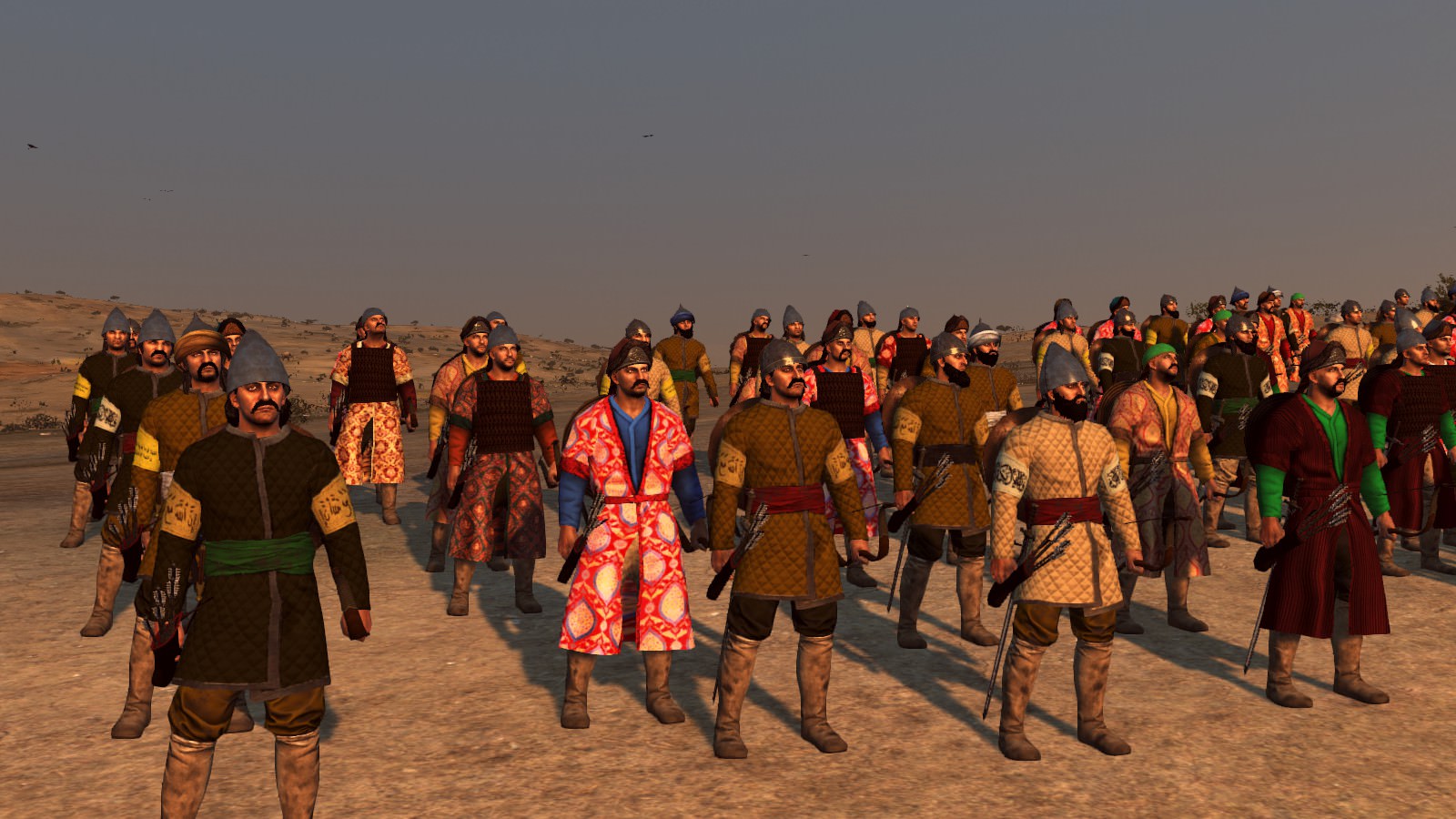
Ghazi could be best described as Holy Warriors acting to advance and protect the borders of Islam, manning the border forts (ribats) and joining offensive campaigns for loot and glory. The coming of the Turks into the Islamic world had a large impact on the Ghazi brotherhoods however, as they settled the borders and brought the fight to the Infidels with raids and skirmishes. The title of Ghazi even became an honorific title for the Seljuks and their successors.
Junior Ghulaman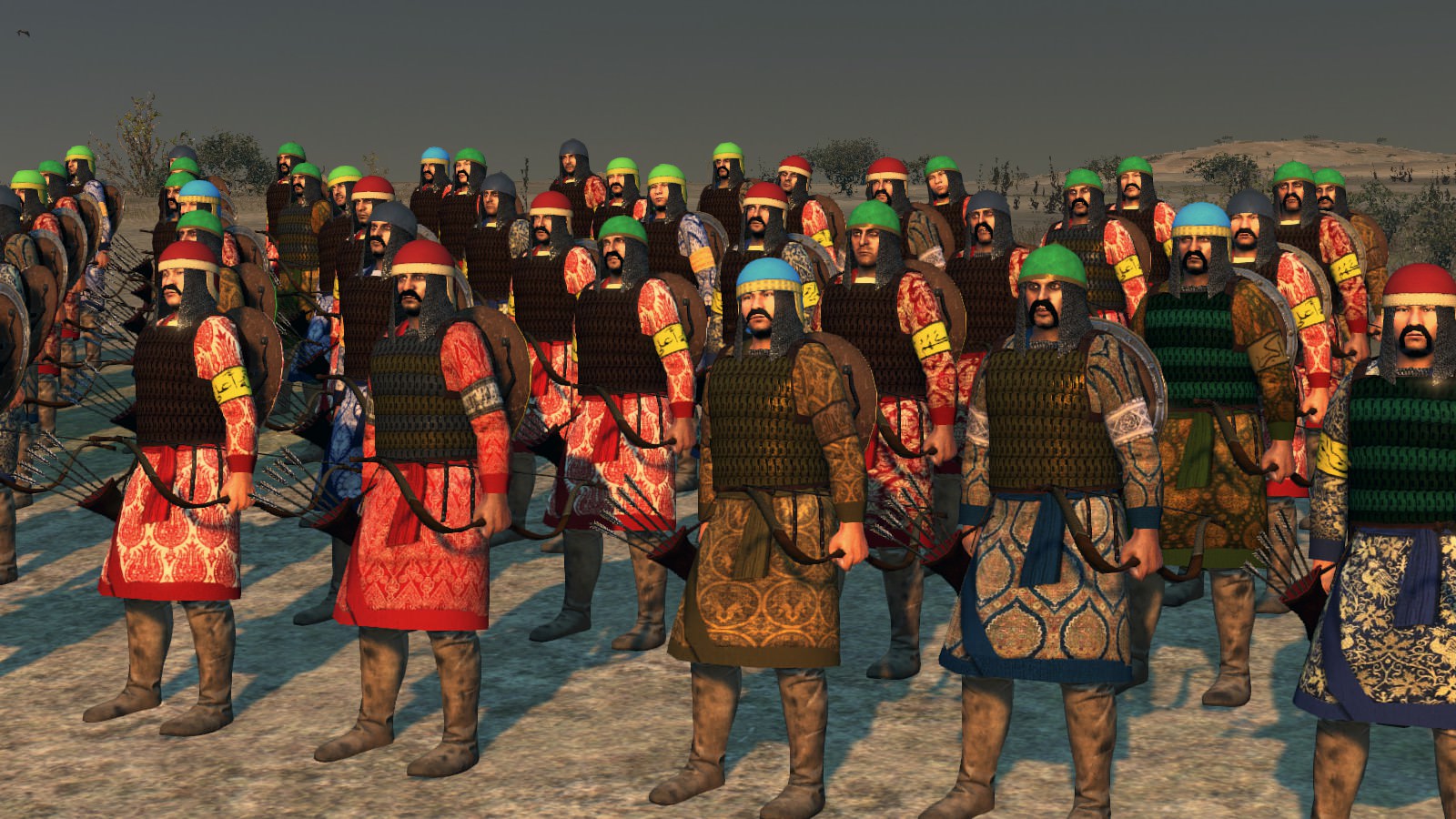
Slave-soldiers, Ghulams or Mamluks were the property of rulers and Amirs, acting as their elite retinue. Fiercely loyal and trained for years, they could fight with a large number of weapons with extreme proficiency and rose to very high ranks in military command and administrative duties. Junior Ghulams, as opposed to Senior Ghulams, had not finished their training, but would fight either on horseback or on foot to support the cavalry elite.
Naffatun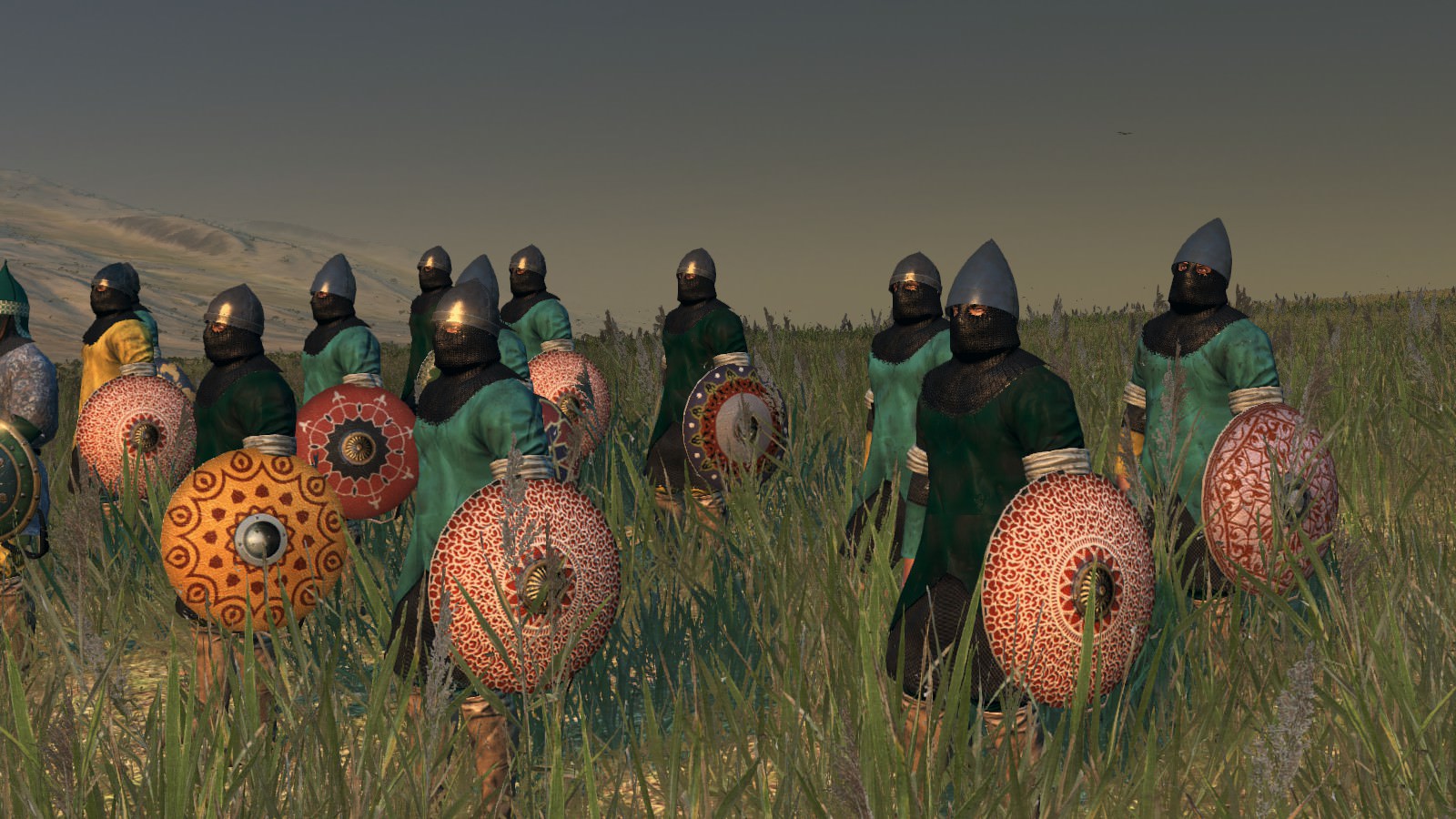
Incendiary weapons became a mainstay of the battles during the Crusades, most importantly in siege warfare. Nafta grenades were the favoured weapons of the Muslims, even being imported all the way into India. Dedicated soldiers would be tasked with using such dangerous weapons and wear special coats less vulnerable to the flames.
Foot Melee Units
Muttawi'ah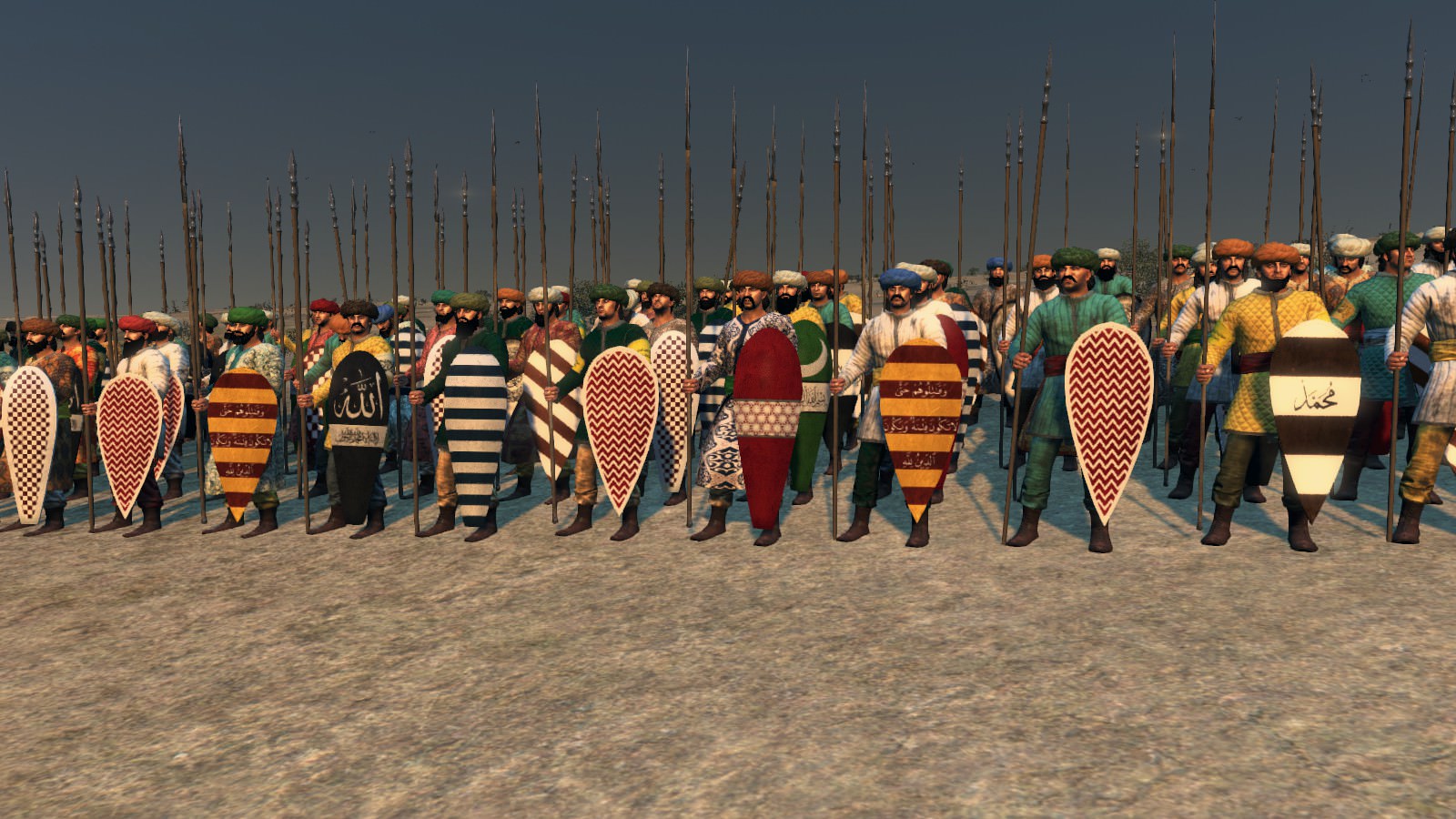
Muttawi'ah were volunteers who, much like the Ghazi, served the interests of Islam. Unlike Ghazi, Muttawi'ah only joined for a campaign season. They formed, however, a militia to defend their cities and could be raised in large numbers from urban centers.
Javanmardan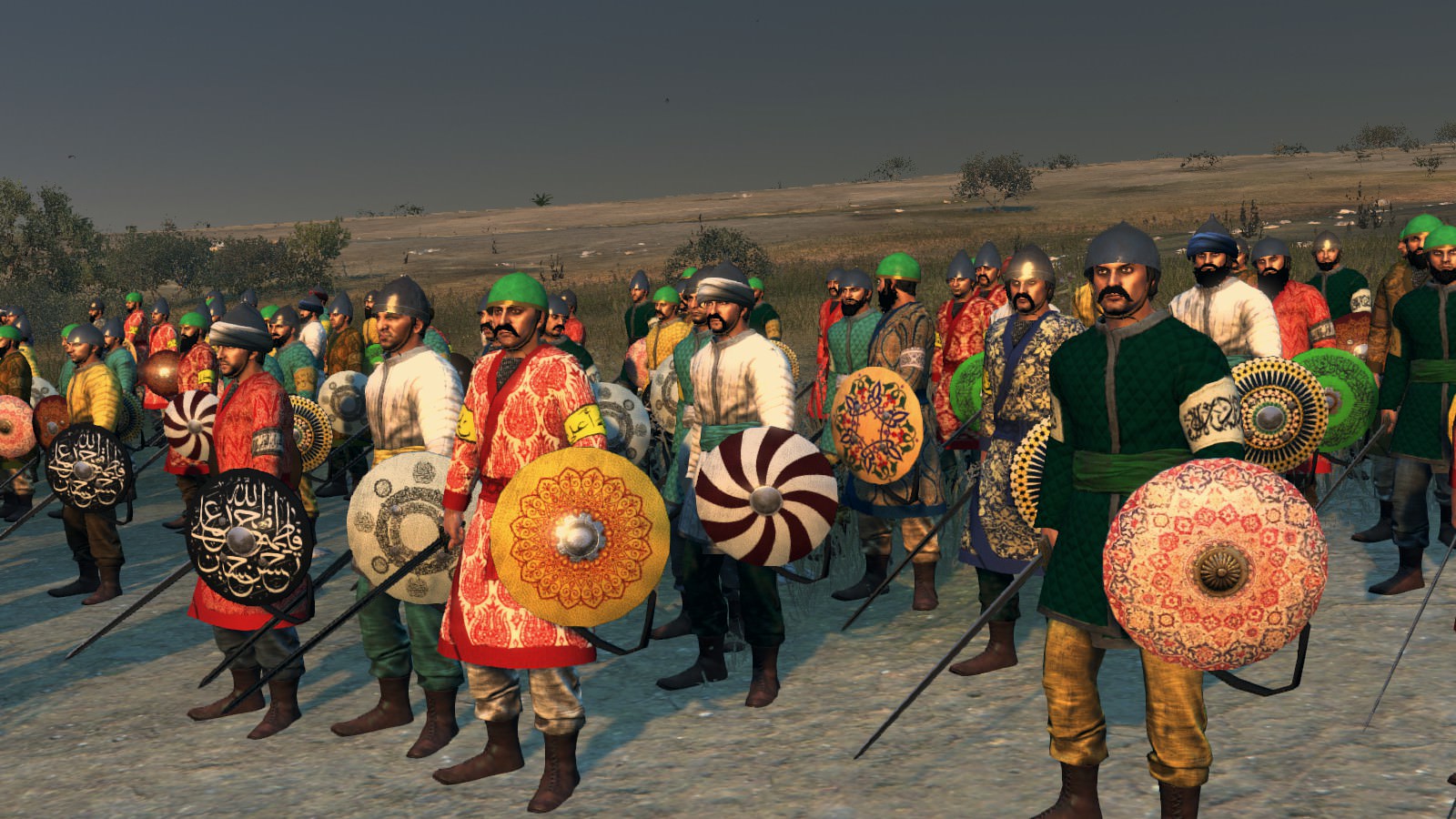
Medieval Javan societies, like the Arabic Futuwwa and Turkish Ahi, were a cross between craftsmen guilds and military orders. They were organized as chivalrous brothers with strict moral codes, and their members would train as soldiers while also being important members of their communities, pledging their services to help build urban settlements and advancing the cause of Islam. Such soldiers sometimes made a great impression on the battlefield, like the Shia militia of the Sarbadars, who Timur thought so highly of that he recruited them after they surrendered.
Piyadegan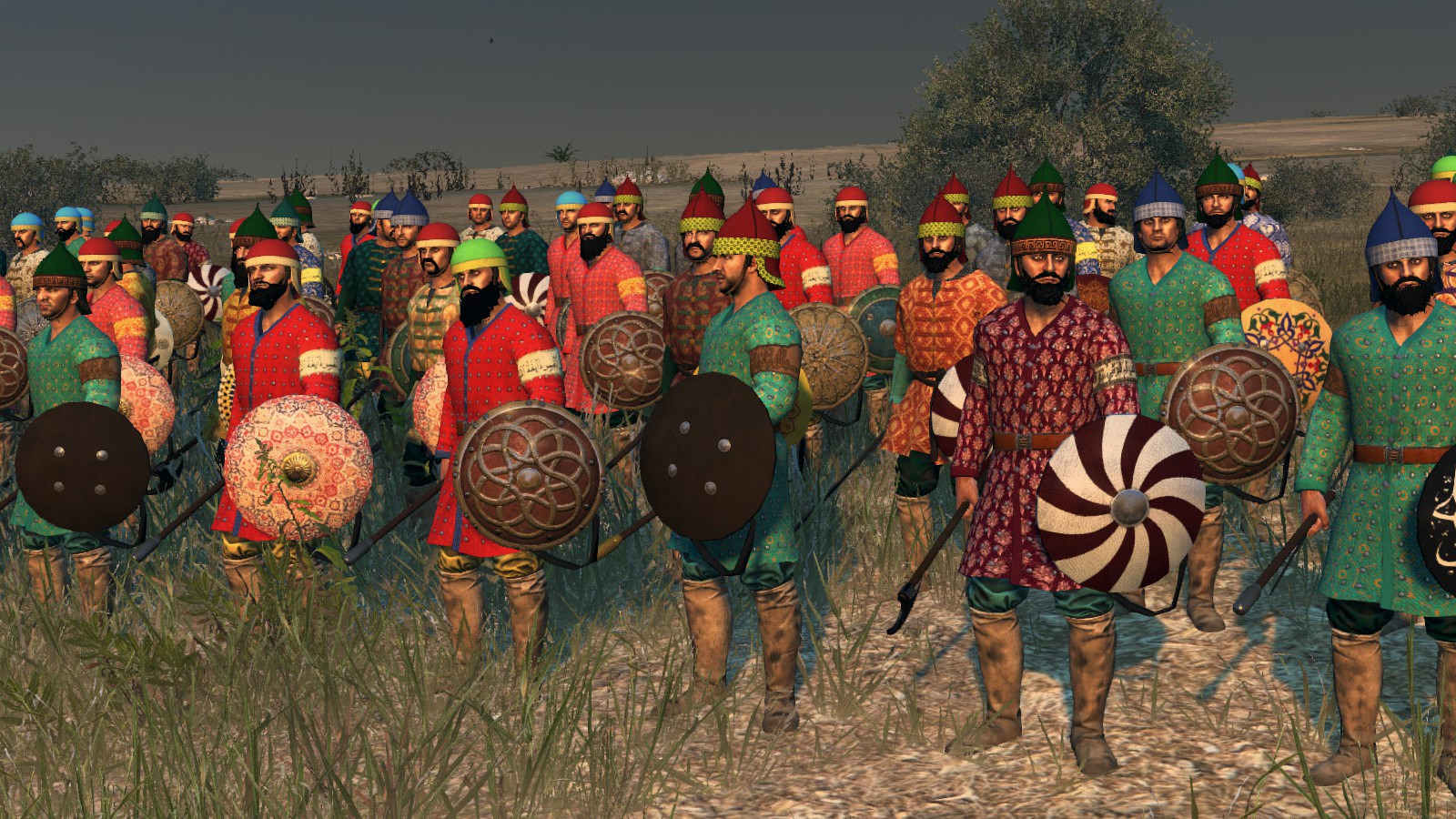
Piyadegan was the general term for foot soldiers. Iranian infantry is mostly illustrated using spears or an assortment of one-handed weapons such as axes, maces and straight swords, along with round shields.
Foot Askari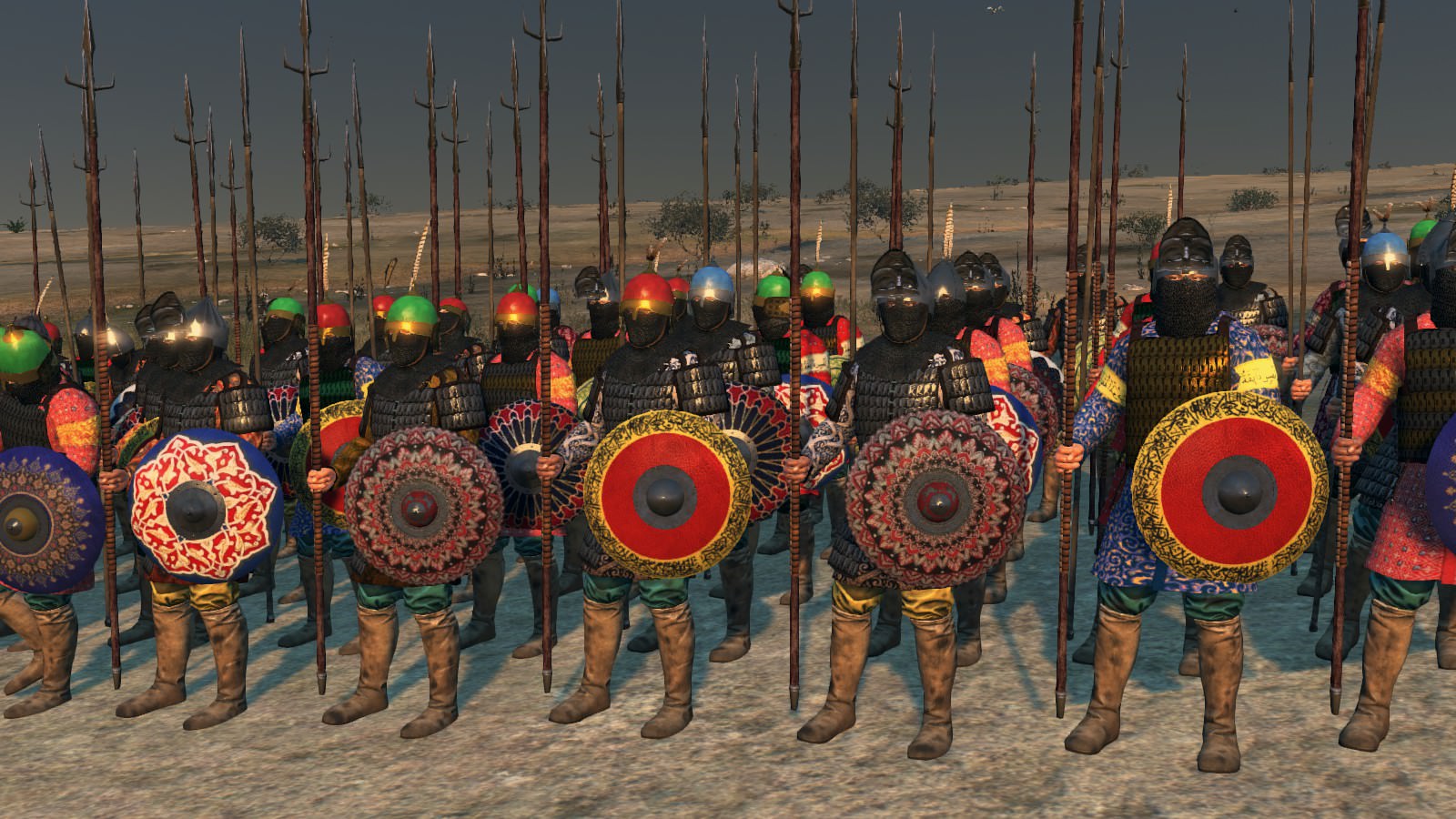
Askari (from askar, 'army') were the retinue soldiers of rulers and Amirs alike. The vast majority of such groups was generally formed of Ghulams, owing personal service to their owner, and who were best known for their absolute loyalty.
Skirmish Cavalry Units
Khwarazmian Cavalry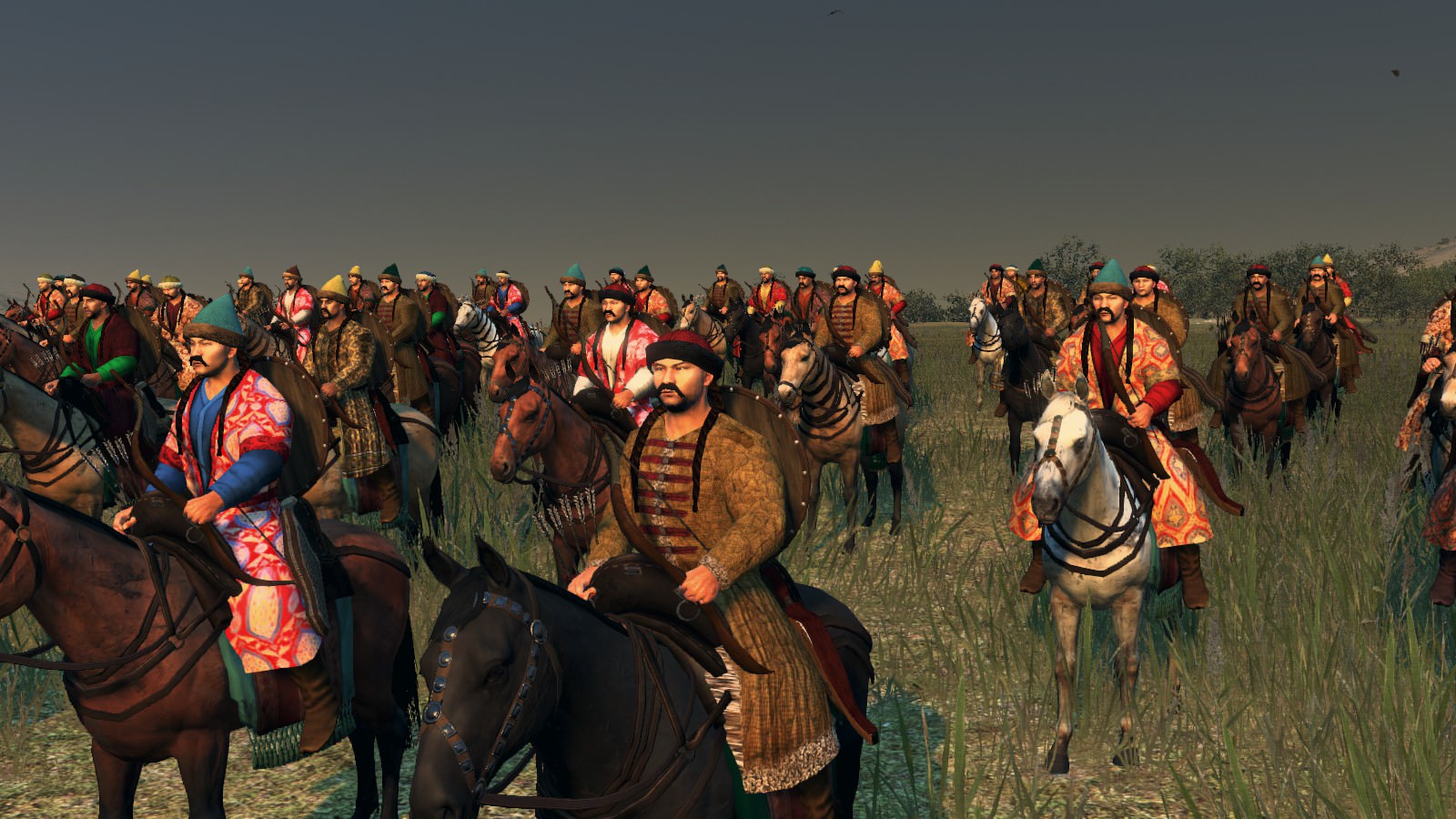
The most famous soldiers of the Khwarazmian armies were the Turks that came from the Qangli and Qipchaq tribes of Khwarazm. With Tekesh's marriage to a princess of the Qangli nobility, Tekesh ensured himself a steady stream of well-disciplined and ferocious warriors. Pagan or nominally Muslim, these horsemen were the reason for the terrible reputation of the Khwarazmians amongst the conquered, looting and pillaging as they pleased.
Turcoman Cavalry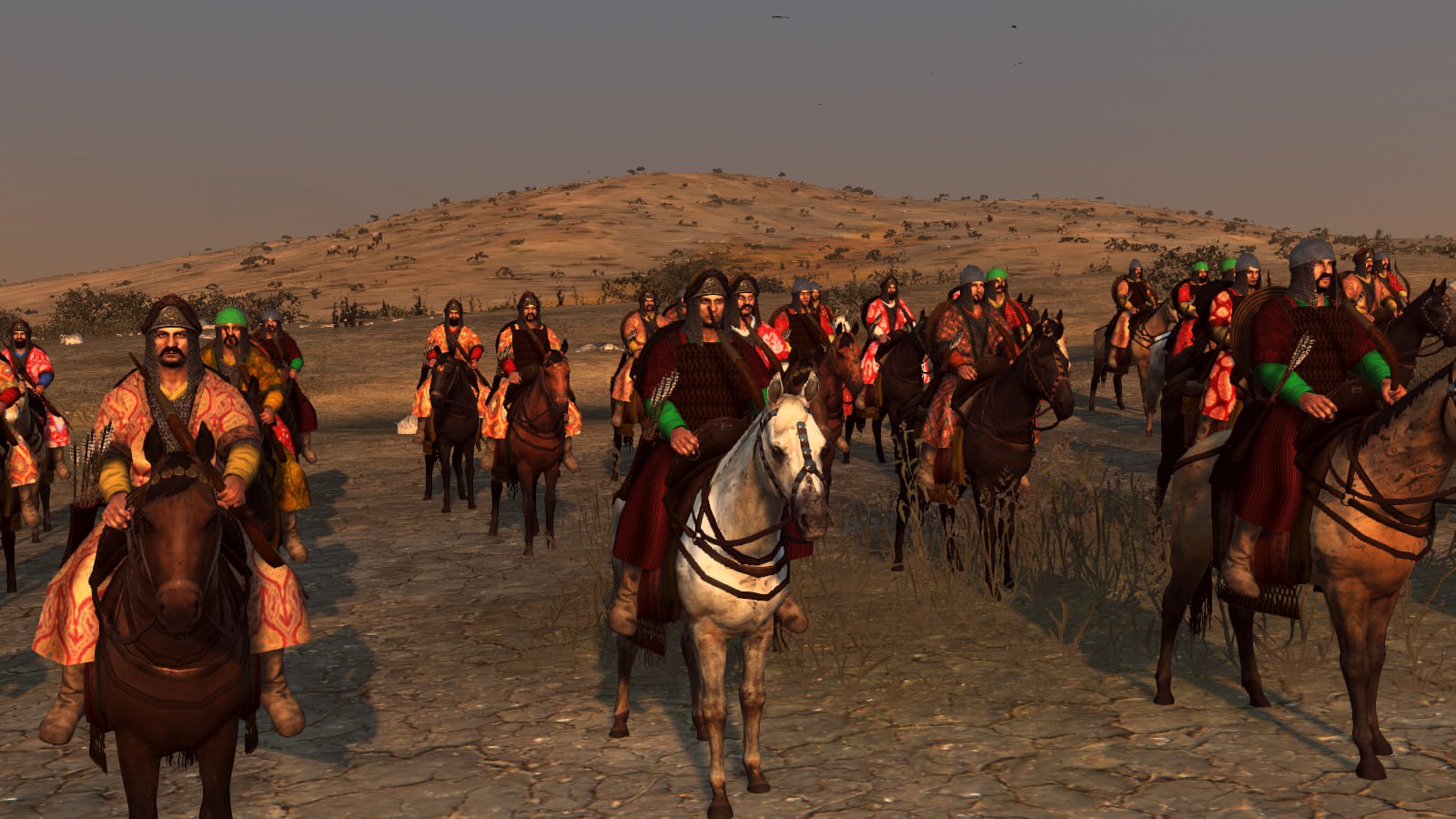
Turcoman tribes flooded into the Iranian region following the Seljuk conquests. Originally the most reliable soldiers for Seljuk rulers, the Turcomans of Iran quickly became a liability, sometimes organizing into large masses of unruly and rebellious soldiers. They were, however, tied to the local amirs due to grazing land rights and owed military service, usually being used as light cavalry and a vanguard, showering enemies with arrows.
Ghulaman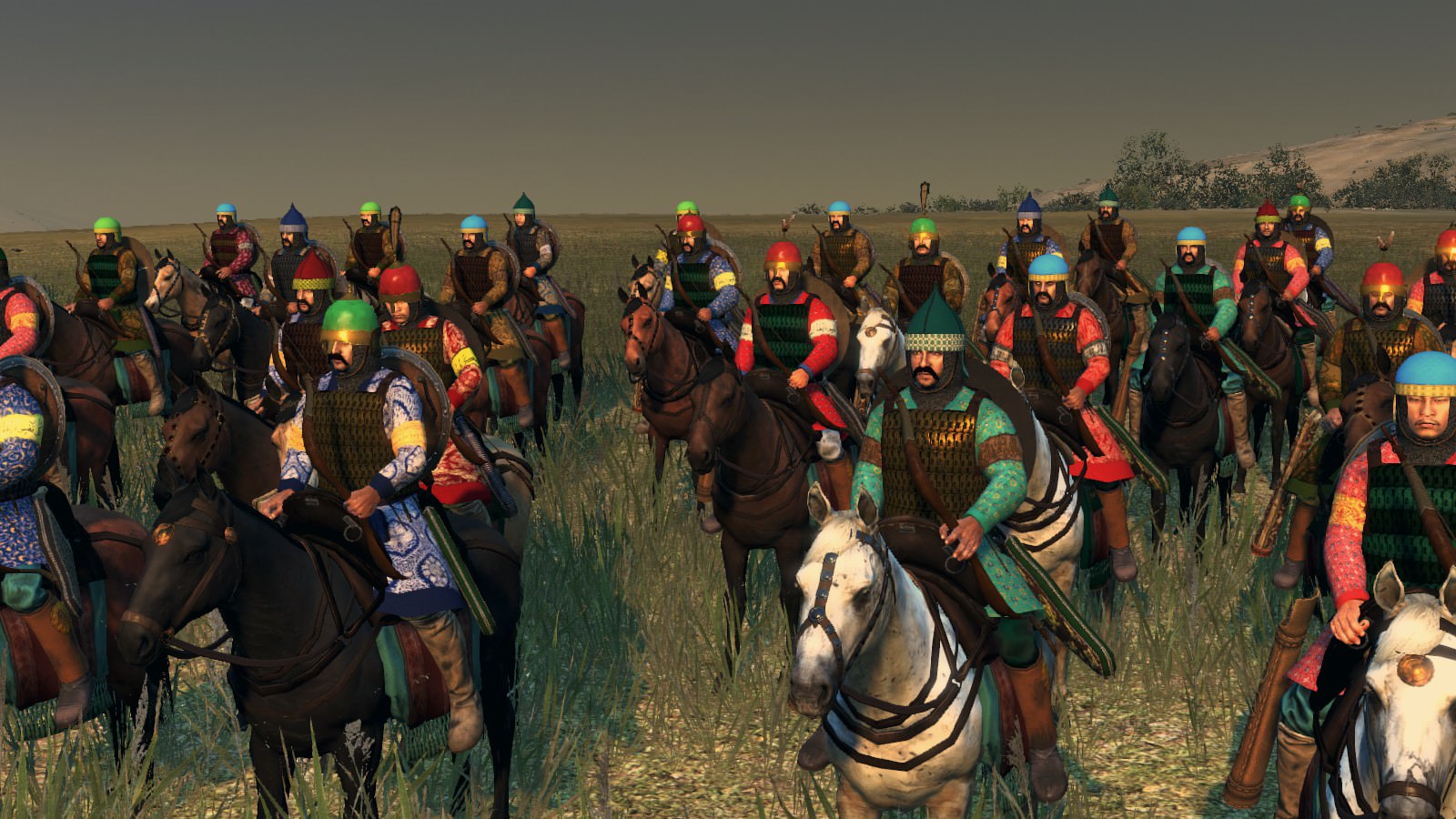
Slave-soldiers, Ghulams or Mamluks were the property of rulers and Amirs, acting as their elite retinue. Fiercely loyal and trained for years, they could fight with a large number of weapons with extreme proficiency and rose to very high ranks in military command and administrative duties. They were notably famous for their skill on horseback, firing arrows at high rates while on the move.
Muqti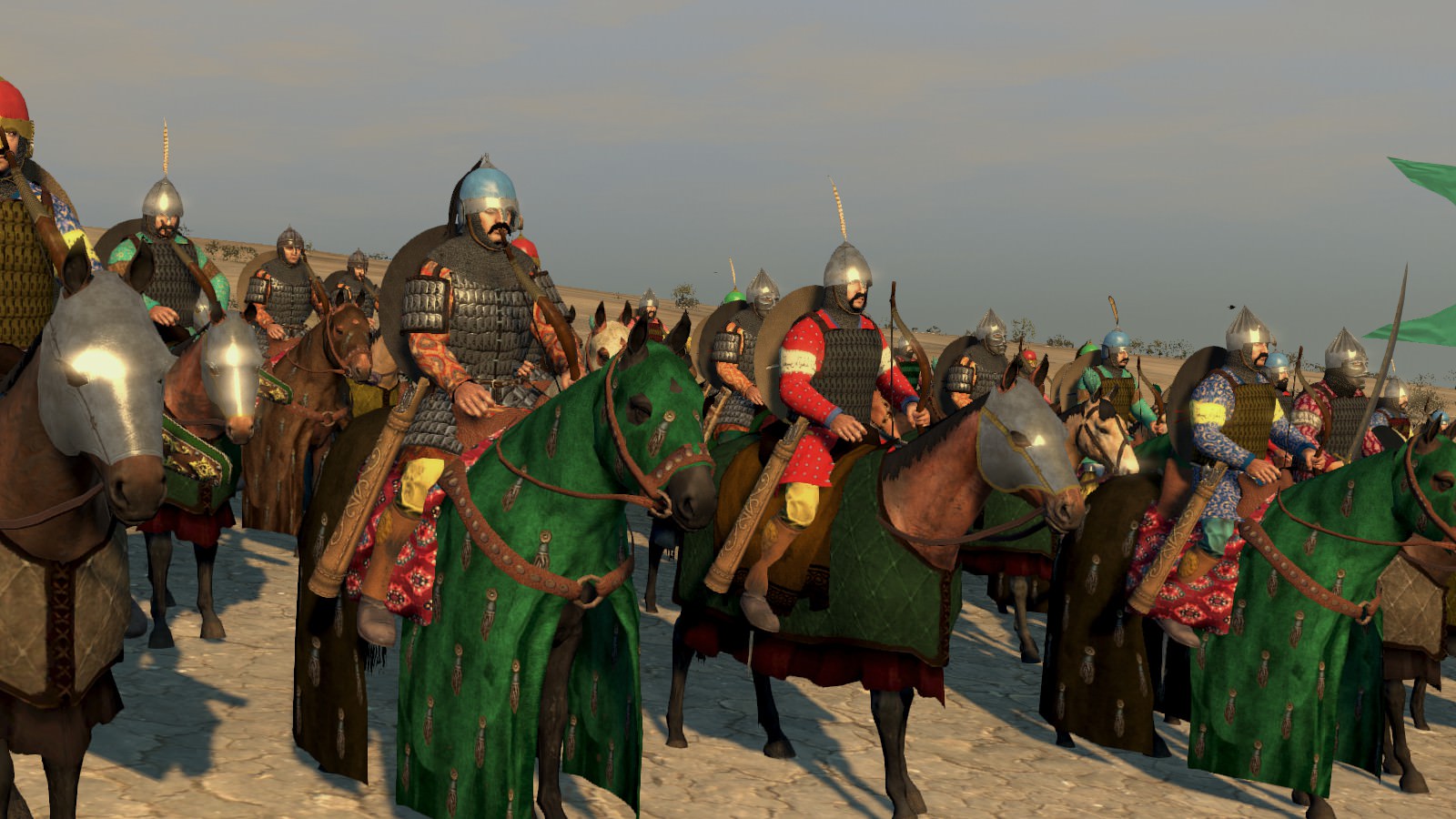
Muqti were iqta holders, and as such, soldiers who were assigned some administrative duties while owing military service in exchange for a tax-farming grant. As such, they formed part of the professional elite of the armies and also would often have to maintain and equip their own contingent of soldiers as part of their responsabilities.
Melee Cavalry Units
Khwarazmian Lancers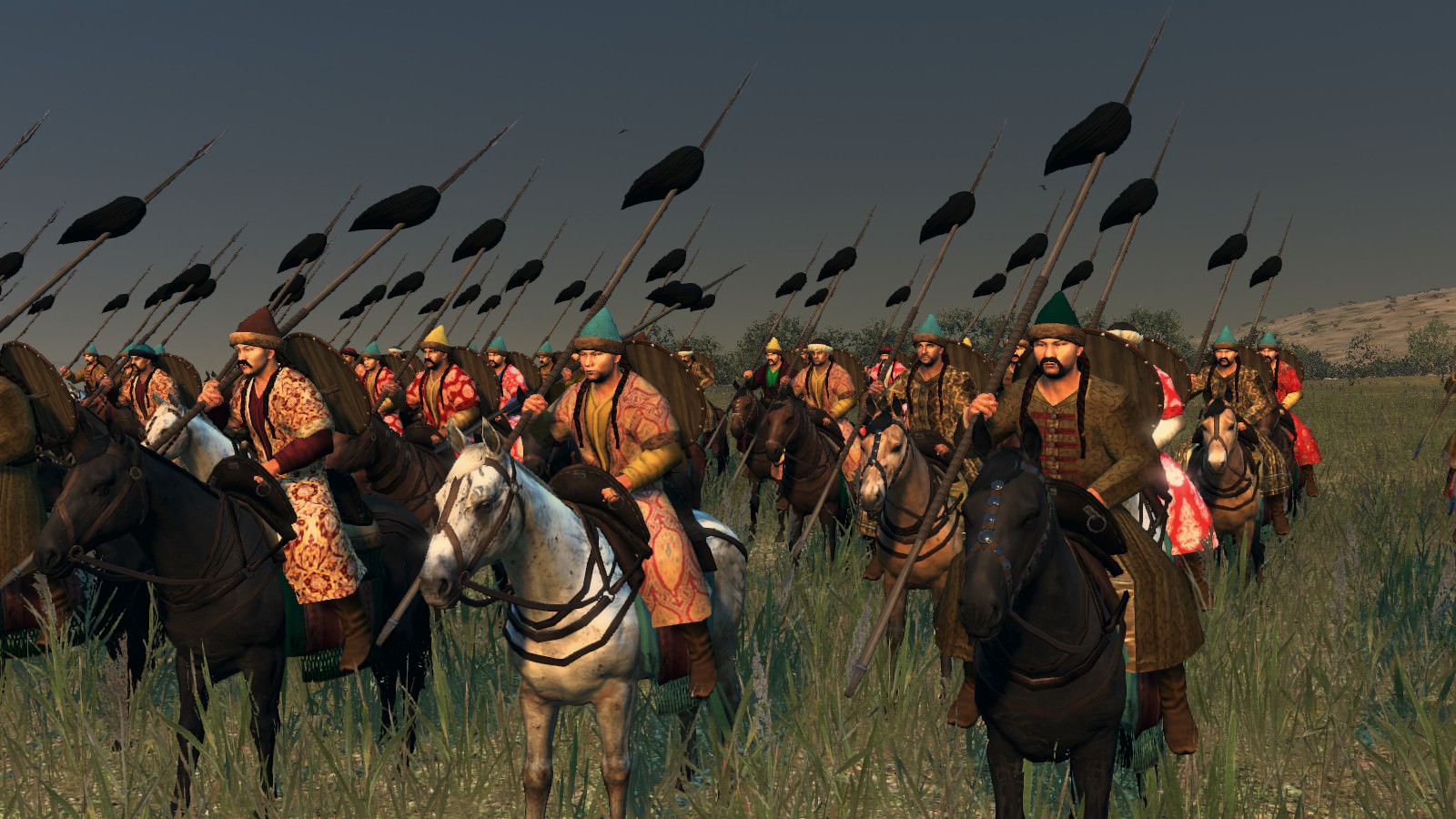
The most famous soldiers of the Khwarazmian armies were the Turks that came from the Qangli and Qipchaq tribes of Khwarazm. With Tekesh's marriage to a princess of the Qangli nobility, Tekesh ensured himself a steady stream of well-disciplined and ferocious warriors. Pagan or nominally Muslim, these horsemen were the reason for the terrible reputation of the Khwarazmians amongst the conquered, looting and pillaging as they pleased.
Camel Cavalry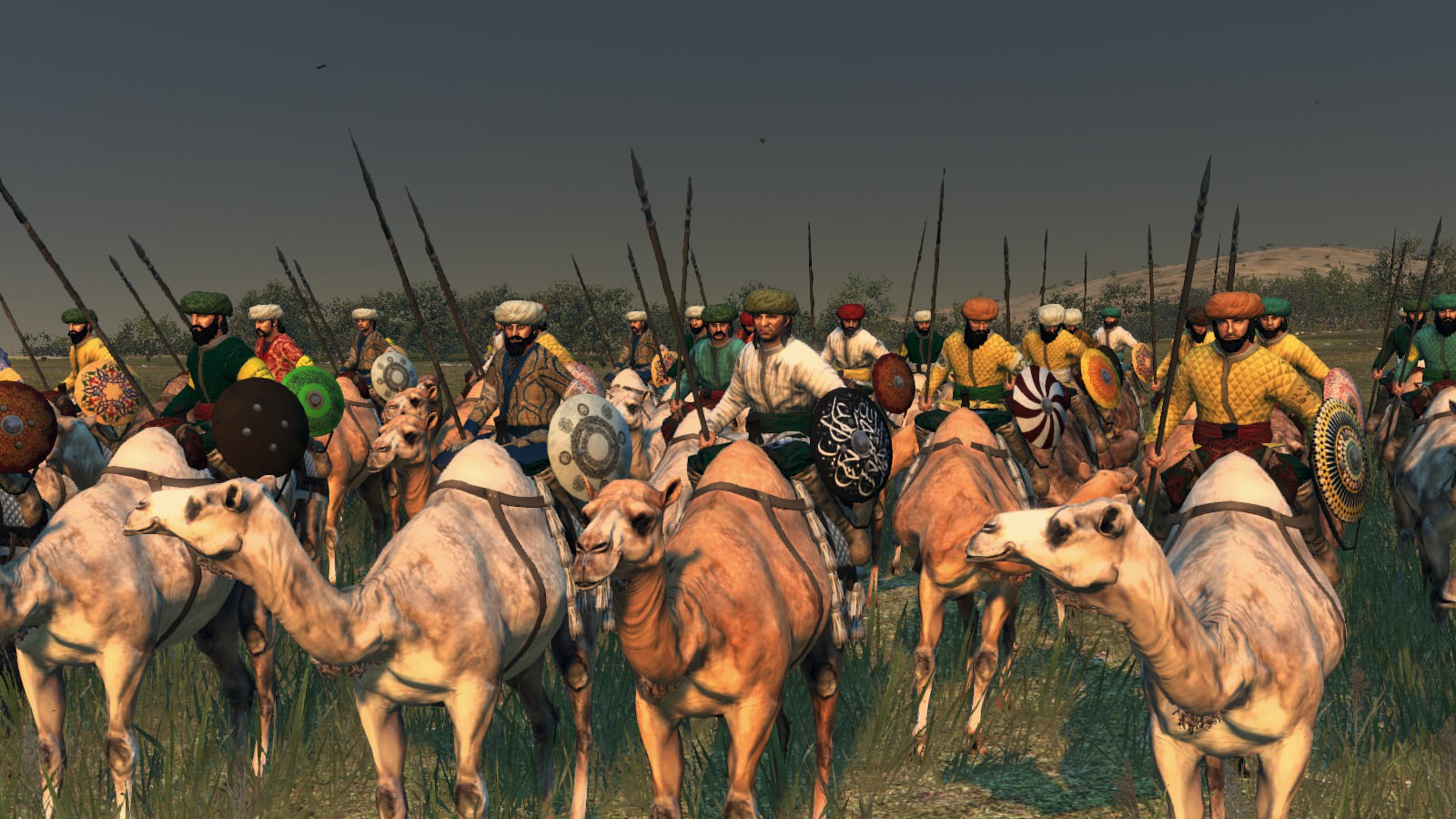
Camels were often used as beasts of burden for Iranian, Arabic, Turkish and Mongol armies, but they also found use as a battle mount. While not as reliable as horses as they would often run away when feeling pain, their resistance to the elements and their ability to frighten other animal mounts made them quite useful at times.
Savaran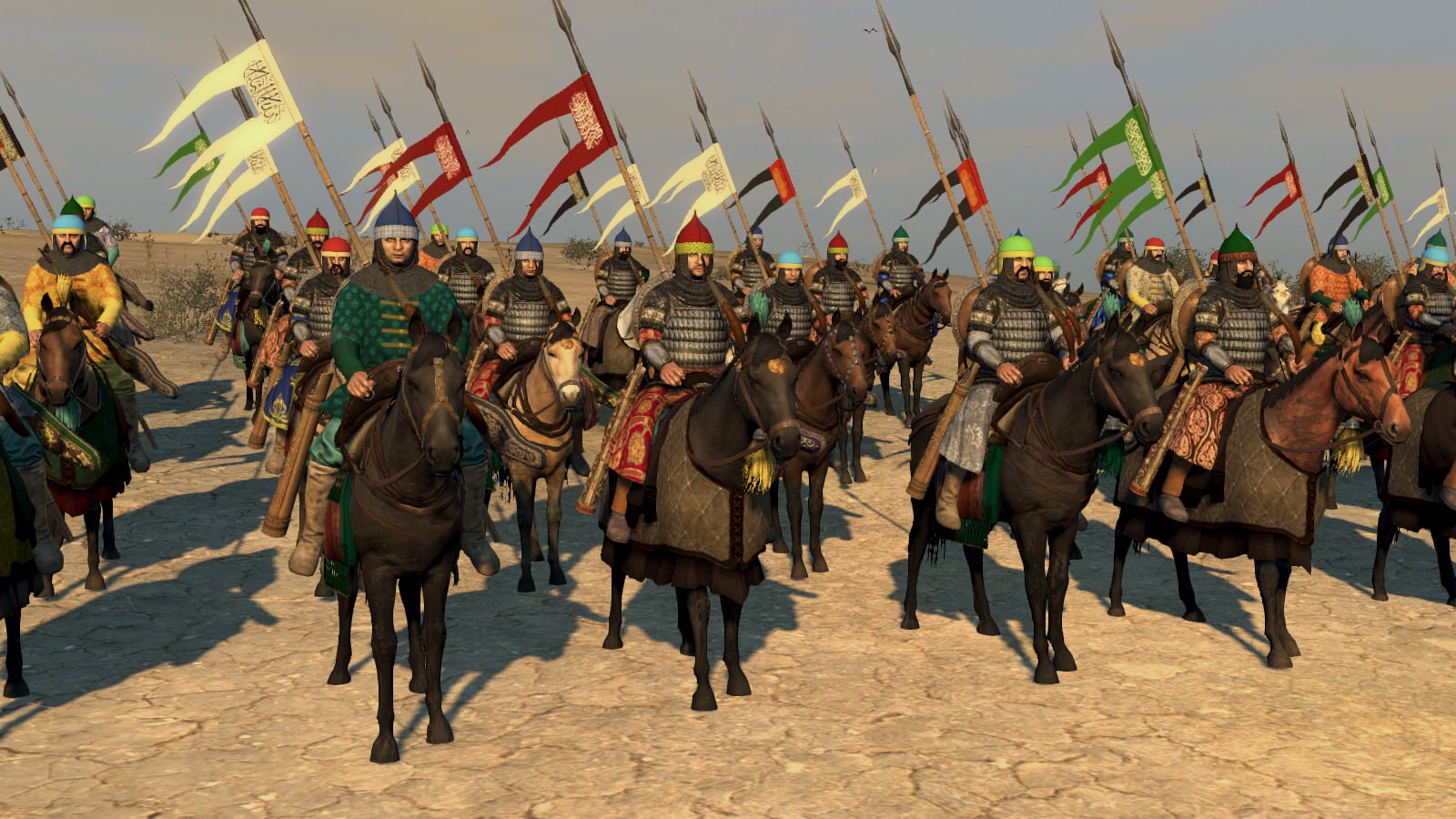
Originally a name used for the noble cavalry of the Sassanid noble cavalry, Savaran ('horsemen') became a term to describe cavalrymen, typically well-trained and armoured.
Askari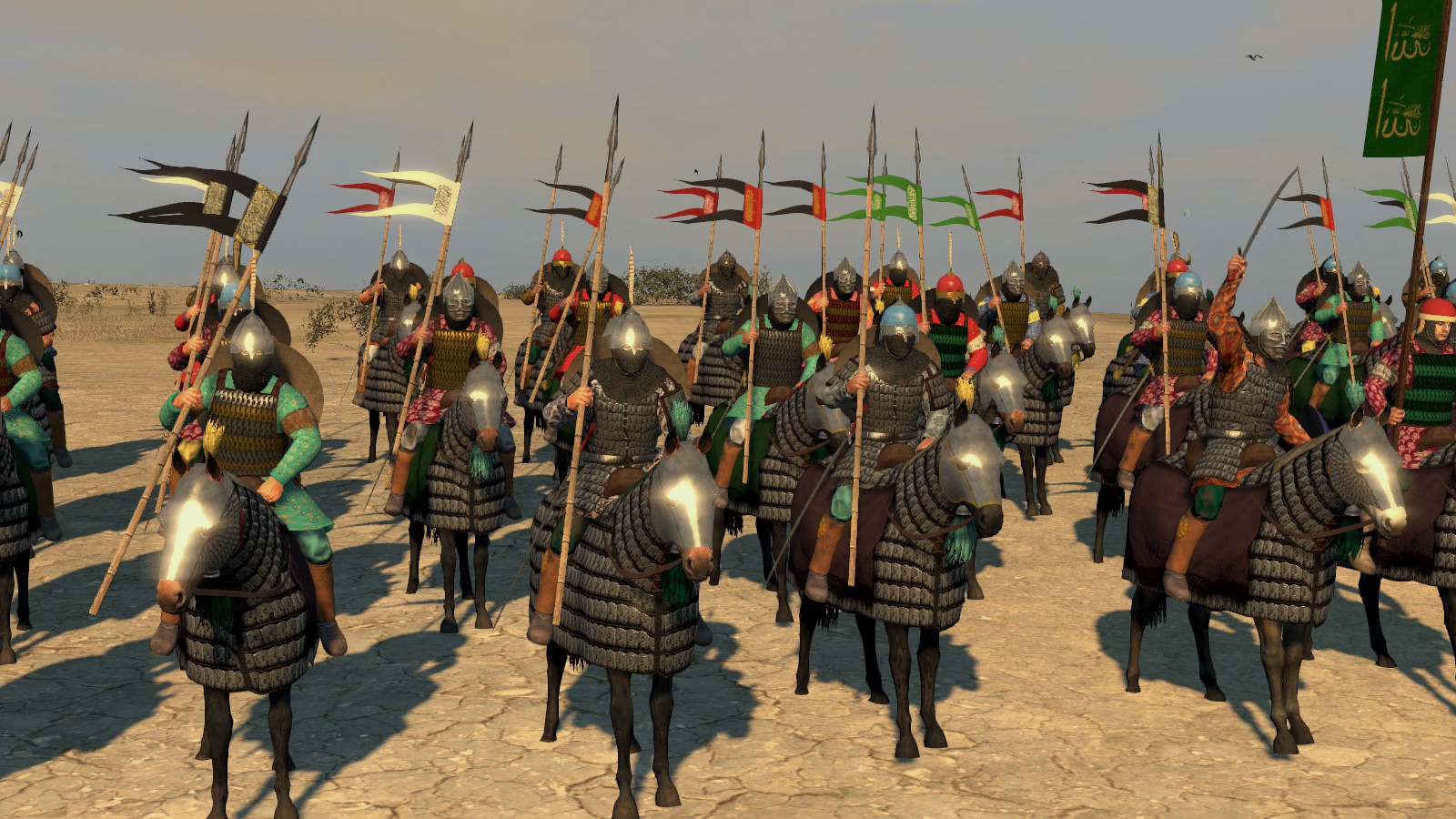
Askari (from askar, 'army') were the retinue soldiers of rulers and Amirs alike. The vast majority of such groups was generally formed of Ghulams, owing personal service to their owner, and who were best known for their absolute loyalty.
High Era
A sipahsalar was a term often used for high-ranking generals in medieval muslim armies. Such a figure's askar would probably be ghulaman, heavily armed and armoured, and most importantly, loyal.
A Faris, a soldier trained in the martial art of Furusiyya, can be described as a Muslim knight, or the equivalent of the Frankish knight. Taught to fight with most weapons, such as the bow and mace, the Faris was a professional soldier and a match to anything he could face on the battlefield.
The Turkoman dynasties of Iran relied heavily on tribesmen to form the bulk of their armies. Turkish soldiers were known as great archers, and the Aq Qoyunlu relied on a large quantity of archers to form their infantry.
Ghazi, in the medieval warfare context, can best be described as warriors on Holy warfare for Islam. Typically a good way to gain legitimacy in the Muslim world, rulers could also invoke Jihad as a way to bolster their manpower for campaigns, as there was no shortage of religious zealots and people looking for plunder. The Ghaznavids typically saw a great number of Ghazis flocking to their banner for their numerous campaigns against the Hindu Indian principalities.
'Siege infantry' denotes soldiers raised by emirs and iqta holders, bound by military service to provide and arm a certain amount of troops, to encircle cities and fortifications, man the siege weapons and assault walls. Their equipment reflects the period's common type of arms and armour, such as mail, puff leather armour, limb armour, wicker and teardrop shields and typical metal helmets.
One of the military classes noted as part of the Turkoman armies were the Qolloghchi, 'servants'. While the actual makeup of this Qolloghchi class is not clear, Arabic soldiers were an integral part of armies such as the Jalayirids and, later, the Qara Qoyunlu and Aq Qoyunlu. Auxiliaries from subject Arabic nobles in Iraq-i Arab formed an important part of the infantry, which was not commonly formed by turks.
Javanmard (futuwwa in arabic) organizations had a strong presence in Iran prior to the turkish invasions, namely in Samanid Khorasan. Such organizations brought together soldiers and irregulars to respect a certain code of conduct, serve their communities and take up arms in a way that is comparable, though not equivalent, to Western knights or the Christian military orders. Javanmards (loosely translated to honorable, chivalrous men) were an integral part of the Sarbadars of Sabzevar's military, as the Sarbadars formed an alliance with Shi'a dervishes, whose armed followers were organized in the typical javanmard fashion, and represented a very large and zealous urban militia.
Pushan-dar formed the heavily armoured contingents of Irano-Turkoman militaries. The 14th century saw a greater differentiation between Arabic and Iranian military fashions, with the latter gaining much more Central Asian influence due to the Mongol conquest. Helmets became more elongated, culminating in a tip, limb protection became extremely common, especially for the arms and large, round wicker shields are in almost every depiction of Iranian soldiers. Metal plates also made their appearance, though usually sewn into fabric armour, such as brigandines.
Pushan-dar formed the heavily armoured contingents of Irano-Turkoman militaries. The 14th century saw a greater differentiation between Arabic and Iranian military fashions, with the latter gaining much more Central Asian influence due to the Mongol conquest. Helmets became more elongated, culminating in a tip, limb protection became extremely common, especially for the arms and large, round wicker shields are in almost every depiction of Iranian soldiers. Metal plates also made their appearance, though usually sewn into fabric armour, such as brigandines.
Turkoman armies in the later medieval period still kept, for the most part, numerous aspects of tribal organization. Cavalry remained the largest contingent of Qara Qoyunlu and Aq Qoyunlu armed forces and the main 'regular' corps of such forces were Tirkash-band, 'quiver-bearers', horse archers mostly drawn from the settled turkish tribal societies.
The 14th century saw the collapse of Ilkhanate unity over Iran, which meant the rise of local rulers, such as the Muzzafarids, Jalayirids, Kartids and Sarbadars, who fought over the remnants of the Mongol state. With these new dynasties came back the Muslim military tradition of elite slave-soldiers. In continuation of the Khwarazmid tradition of heavily armoured cavalry, Khwarazmian ghulaman wear heavy lamellar coats and their horses heavy barding of lamellar, quite often partially gilded as shown in 14th century art.
Mohajeman, 'raiders', were traditionally used as a vanguard, and filling numerous important roles. Acting as scouts, to provide information on the enemy, and as pillagers in enemy territory to destroy local logistical support and terrorizing the local population. In battle, such light cavalry would use their bows to break enemy formation, then draw weapons and charge at isolated groups.
An Iqta holder can, and usually did in the Seljuq and Khwarazmid periods, have a military obligation to the one who granted it to him. The 'fief' would also stipulate how many soldiers a Muqta would have to provide to his overlord in war. Cavalrymen were a typical kind of soldier requested in Iqtas, and Iran had a rich history of mounted combat. The typical mounted soldiers, or sarbaazan, depicted in 14th century miniatures, when not in heavy armour or wielding a lance, wore mostly fabric armour, with vambraces, a helmet and wicker shield.
Turkoman armies in the later medieval period still kept, for the most part, numerous aspects of tribal organization. While most Turkomans recruited as regulars were used as horse archers, the lance remained a very popular weapon for Turkoman tribesmen and for warfare in Iran in general.
Iqtas are generally described as the Muslim equivalent to the European fief. A Muqta (iqta holder) was not in fact a lord with a hereditary title, but rather a professional soldier* paid by collecting taxes for his lord and himself as per the iqta, and said iqta would return to his lord at the death of the holder. However, they were given to loyal soldiers who were then given extensive duties and acted much like landed nobility, forming a Muslim military aristocracy. Due to the nature of their armies, the Seljuqs and Khwarazmians typically granted iqtas to Turkish commanders, creating a Persianate Turkish ruling class.
*In some cases however, iqtas could be purely administrative. The military iqta was much more common during the Seljuq and Khwarazmian periods.
The 14th century saw the collapse of Ilkhanate unity over Iran, which meant the rise of local rulers, such as the Muzzafarids, Jalayirids, Kartids and Sarbadars, who fought over the remnants of the Mongol state. With these new dynasties came back the Muslim military tradition of elite slave-soldiers. In continuation of the Khwarazmid tradition of heavily armoured cavalry, Khwarazmian ghulaman wear heavy lamellar coats and their horses heavy barding of lamellar, quite often partially gilded as shown in 14th century art.
Tofangchiyan, 'musketeers', is a name used for essentially all late medieval and early modern soldiers using gunpowder weapons in Iran. These soldiers were typically lower class individuals who did not need much practice to effectively use the weapon.
The proximity to India allowed Iranian dynasties to purchase elephants and use their terrifying force in battle. The Ghaznavids are best known for their great use of war elephants. Elephants were noted to have been part of the Khwarazmian groups that fought the Mongols.
A sipahsalar was a term often used for high-ranking generals in medieval muslim armies. Such a figure's askar would probably be ghulaman, heavily armed and armoured, and most importantly, loyal.
Conscripts were part of the Iranian infantry the way back in Antiquity. Ra'yat (subjects) made poor soldiers, as they generally could not afford quality equipment and had no formal training or experience unless they had volunteered for military duty or had been conscripted before. Javelin throwing was a popular sport in medieval Iran and is a place where skill could easily translate to the battlefield.
Turkish groups of nomads had migrated into Khwarazm peacefully before the 13th century, and had also followed the Seljuqs in their conquest of Iran. Many had been settled and would bring their military skill to battle for the rulers and leaders they felt loyal to. Turkish skill in archery is well-known and even though a true Turk does not usually fight on foot, he does if the situation calls for it.
A Faris, a soldier trained in the martial art of Furusiyya, can be described as a Muslim knight, or the equivalent of the Frankish knight. Taught to fight with most weapons, such as the bow and mace, the Faris was a professional soldier and a match to anything he could face on the battlefield.
Muslims, like the Franks of Palestine and Romans, used the powerful crossbow. The Persian charkh was generally a lighter type, which would have been favoured by Muslims, but the Saracens were also known to use large, fixed ballista-like versions, and even mounted them on camels.
Conscripts were part of the Iranian infantry the way back in Antiquity. Ra'yat (subjects) made poor soldiers, as they generally could not afford quality equipment and had no formal training or experience unless they had volunteered for military duty or had been conscripted before. Spears were the typical infantry weapon during the medieval era for common folk, as they were cheap and effective.
Ghazi, in the medieval warfare context, can best be described as warriors on Holy warfare for Islam. Typically a good way to gain legitimacy in the Muslim world, rulers could also invoke Jihad as a way to bolster their manpower for campaigns, as there was no shortage of religious zealots and people looking for plunder. The Ghaznavids typically saw a great number of Ghazis flocking to their banner for their numerous campaigns against the Hindu Indian principalities.
Turkomans were a large part of the late era Iranian military, as tribes first formed a significant part of Timur's armies, but, most importantly, the later dynasties, that of the Qara Qoyunlu and the Aq Qoyunlu, were Turkoman confederations which greatly depended on tribes to provide soldiers for warfare. While most soldiers of these armies were mounted, a fair number of infantry were amongst these groups and miniatures of the Aq Qoyunlu period show foot soldiers of Turkoman origin, including some wielding large axes.
'Siege infantry' denotes soldiers raised by emirs and iqta holders, bound by military service to provide and arm a certain amount of troops, to encircle cities and fortifications, man the siege weapons and assault walls. Their equipment reflects the period's common type of arms and armour, such as mail, studded fabric armour, limb armour, wicker kalkan shields and typical metal helmets.
One of the military classes noted as part of the Turkoman armies were the Qolloghchi, 'servants'. While the actual makeup of this Qolloghchi class is not clear, Arabic soldiers were an integral part of armies such as the Jalayirids and, later, the Qara Qoyunlu and Aq Qoyunlu. Auxiliaries from subject Arabic nobles in Iraq-i Arab formed an important part of the infantry, which was not commonly formed by Turks.
Pushan-dar formed the heavily armoured contingents of Irano-Turkoman militaries. The later military elite of Iranian armies that is depicted in miniatures display the overwhelming presence of very long, decorated helmets and the Turkoman 'turban' helmet, large-bossed wicker shields, limb armour and plated mail (jawshan). Amongst the many surviving artifacts are also found the iconic shields of late medieval and early modern Iran and India, the Sipar(Iran)/Dhal(India), made of either laminated hide or metal with 4 extruding bosses of metal.
Pushan-dar formed the heavily armoured contingents of Irano-Turkoman militaries. The later military elite of Iranian armies that is depicted in miniatures display the overwhelming presence of very long, decorated helmets and the Turkoman 'turban' helmet, large-bossed wicker shields, limb armour and plated mail (jawshan). Amongst the many surviving artifacts are also found the iconic shields of late medieval and early modern Iran and India, the Sipar(Iran)/Dhal(India), made of either laminated hide or metal with 4 extruding bosses of metal.
Pasdaran ('guards') are the last line of defense for a Shah. The role of personal bodyguards would typically fall to the most trusted of a ruler's soldiers, which would naturally be from the Ghulam troops in medieval Islamic kingdoms. Sources on the use of polearms East of Europe are sparse, but documents from visitors to the East and some few surviving artefacts would indicate that Muslim kingdoms also developed some weapons of that nature.
Turkish groups of nomads had migrated into Khwarazm peacefully before the 13th century, and had also followed the Seljuqs in their conquest of Iran. Many had been settled and would bring their military skill to battle for the rulers and leaders they felt loyal to. Turks were born in the saddle and were known as fantastic cavalrymen, especially for their skill in archery on horseback. The importance of horse archers had gradually diminished from the Seljuq invasion, but they still were quite useful as scouts, raiders and skirmishers, harassing moving columns and screening the main army.
A small Sufi Shia sect in Azerbaijan in the mid-15th century, the Safaviyya gained a foothold in Iranian politics when it received favour from Shah Uzun Hasan and the intermarriage between the royal family and their leader's gave them significant political clout. As the Aq Qoyunlu realm was collapsing to civil war, the young leader of the Safaviyya, Ismail, would forcefully take the capital of Tabriz and declare himself Shah. Throughout its existence, the Safaviyya would find support in a few Turkoman tribes, of which would come the armed wing of the sect, the Qizilbash, or 'red-headed', for the iconic headgear of the group.
The 14th century saw the collapse of Ilkhanate unity over Iran, which meant the rise of local rulers, such as the Muzzafarids, Jalayirids, Kartids and Sarbadars, who fought over the remnants of the Mongol state. With these new dynasties came back the Muslim military tradition of elite slave-soldiers. In continuation of the Khwarazmid tradition of heavily armoured cavalry, Khwarazmian ghulaman wear heavy armour such as mail or plated mail (jawshan) and their horses heavy barding of lamellar, quite often partially gilded as shown in 15th century art.
Camels are well-adapted as mounts for patrolling the desert and are effective for fighting cavalry, scaring the horses. There also happens to be a fair number of them all across Greater Iran, especially in Northern Khorasan. The Amudarya in Khwarazm is flanked by the Kyzyl-Kum and Kara-Kum desert, making camel cavalry very useful. Many Turkish nomads also happen to be camel pastoralists.
A small Sufi Shia sect in Azerbaijan in the mid-15th century, the Safaviyya gained a foothold in Iranian politics when it received favour from Shah Uzun Hasan and the intermarriage between the royal family and their leader's gave them significant political clout. As the Aq Qoyunlu realm was collapsing to civil war, the young leader of the Safaviyya, Ismail, would forcefully take the capital of Tabriz and declare himself Shah. Throughout its existence, the Safaviyya would find support in a few Turkoman tribes, of which would come the armed wing of the sect, the Qizilbash, or 'red-headed', for the iconic headgear of the group.[/SPOILER]
Mohajeman, 'raiders', were traditionally used as a vanguard, and filling numerous important roles. Acting as scouts, to provide information on the enemy, and as pillagers in enemy territory to destroy local logistical support and terrorizing the local population. In battle, such light cavalry would use their bows to break enemy formation, then draw weapons and charge at isolated groups.
An Iqta holder can, and usually did in the Seljuq and Khwarazmid periods, have a military obligation to the one who granted it to him. The 'fief' would also stipulate how many soldiers a Muqta would have to provide to his overlord in war. Cavalrymen were a typical kind of soldier requested in Iqtas, and Iran had a rich history of mounted combat. The typical mounted soldiers, or sarbaazan, depicted in 15th century miniatures, when not in heavy armour or wielding a lance, wore mostly fabric armour, with vambraces, a helmet and wicker shield.
Iqtas are generally described as the Muslim equivalent to the European fief. A Muqta (iqta holder) was not in fact a lord with a hereditary title, but rather a professional soldier* paid by collecting taxes for his lord and himself as per the iqta, and said iqta would return to his lord at the death of the holder. However, they were given to loyal soldiers who were then given extensive duties and acted much like landed nobility, forming a Muslim military aristocracy. Due to the nature of their armies, the Seljuqs and Khwarazmians typically granted iqtas to Turkish commanders, creating a Persianate Turkish ruling class.
*In some cases however, iqtas could be purely administrative. The military iqta was much more common during the Seljuq and Khwarazmian periods.
The 14th century saw the collapse of Ilkhanate unity over Iran, which meant the rise of local rulers, such as the Muzzafarids, Jalayirids, Kartids and Sarbadars, who fought over the remnants of the Mongol state. With these new dynasties came back the Muslim military tradition of elite slave-soldiers. In continuation of the Khwarazmid tradition of heavily armoured cavalry, Khwarazmian ghulaman wear heavy armour such as mail or plated mail (jawshan) and their horses heavy barding of lamellar, quite often partially gilded as shown in 15th century art.
With the rise of Ottoman power in the Eastern Mediterranean threatening Venice's Stato da Mar, a natural ally was found in the rival of such a threat. The Venetians found in Shah Uzun Hasan someone that could threaten the Eastern border of the Ottoman empire and sent many embassies to cement such an alliance. The Persians were found to be lacking in gunpowder armament and the Venetians made good on their alliance by attempting to provide material support. While the accounts vary on the actual shipments, one notes '52 mortars, six of them large ones, 500 arquebuses, and 200 musketeers in order to instruct his army in their use.'
CREDITS
This faction (and affiliated factions and units) could not have been completed without the significant contributions of Ltd., Slytacular, dontfearme22 and hessam the terrible for their models, model work, counsel and time. Also, a great thank you to everyone who provided opinions, research and other models that I cannot directly credit the work to but appear in the unit pictures.


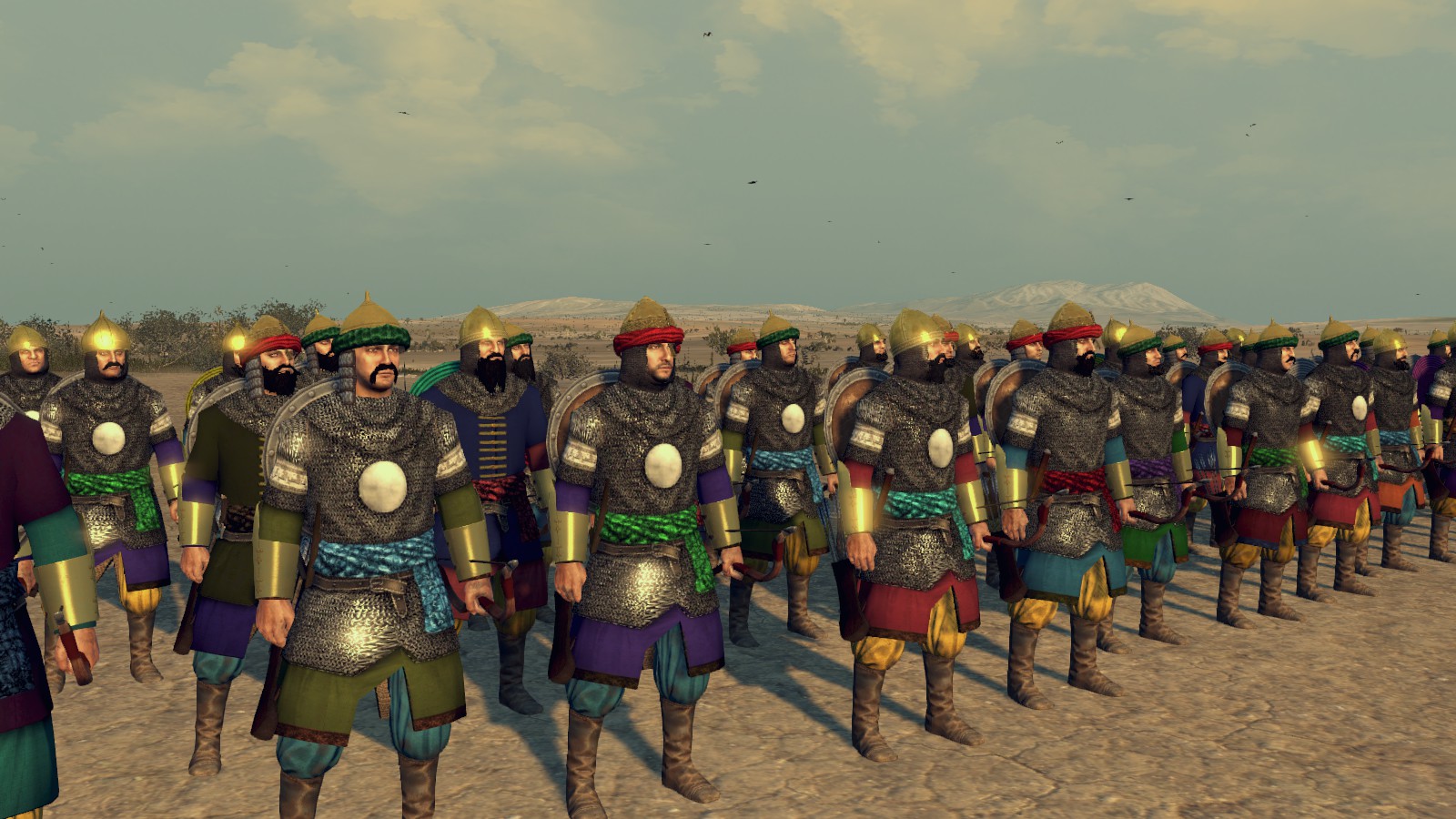
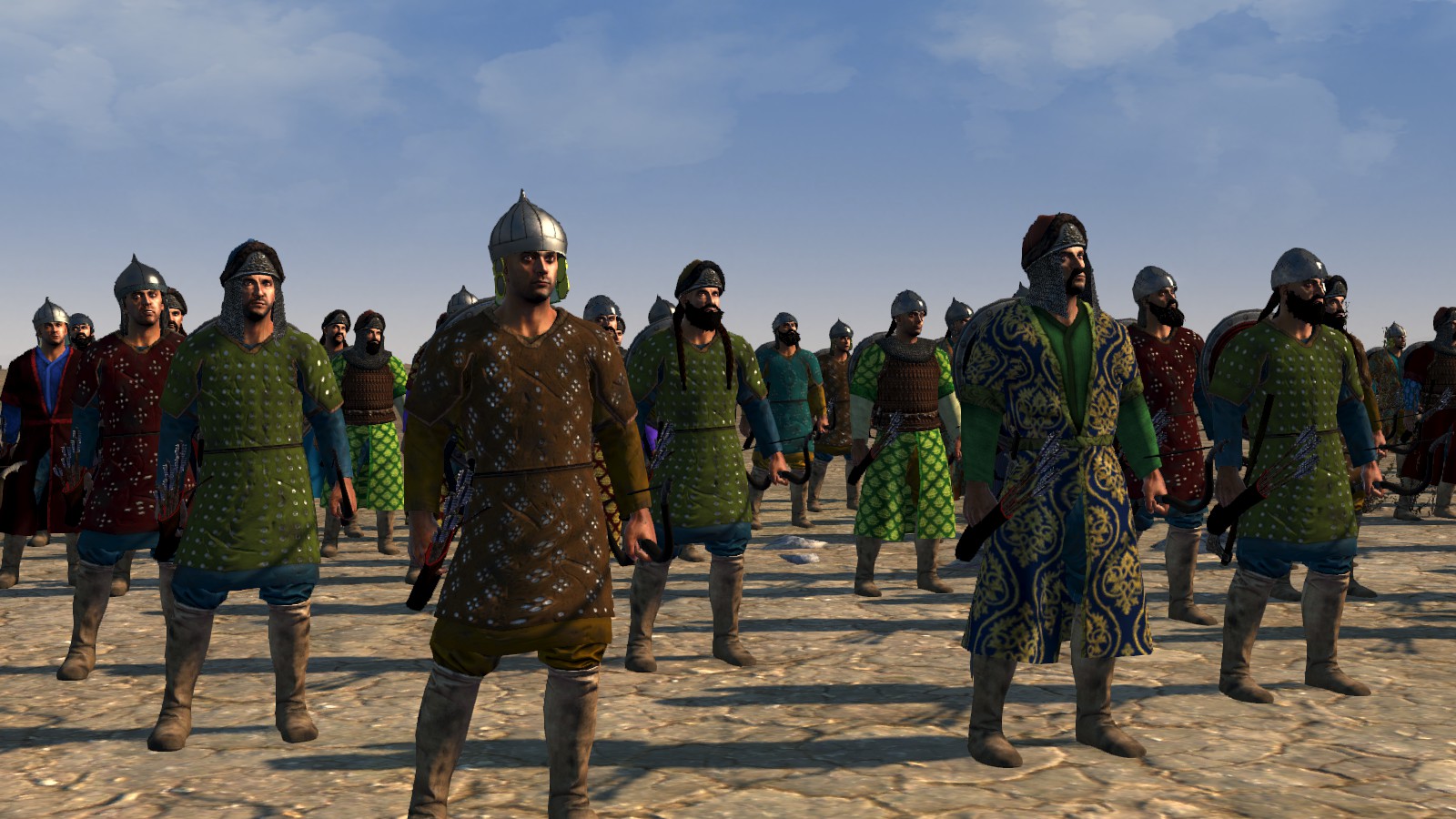
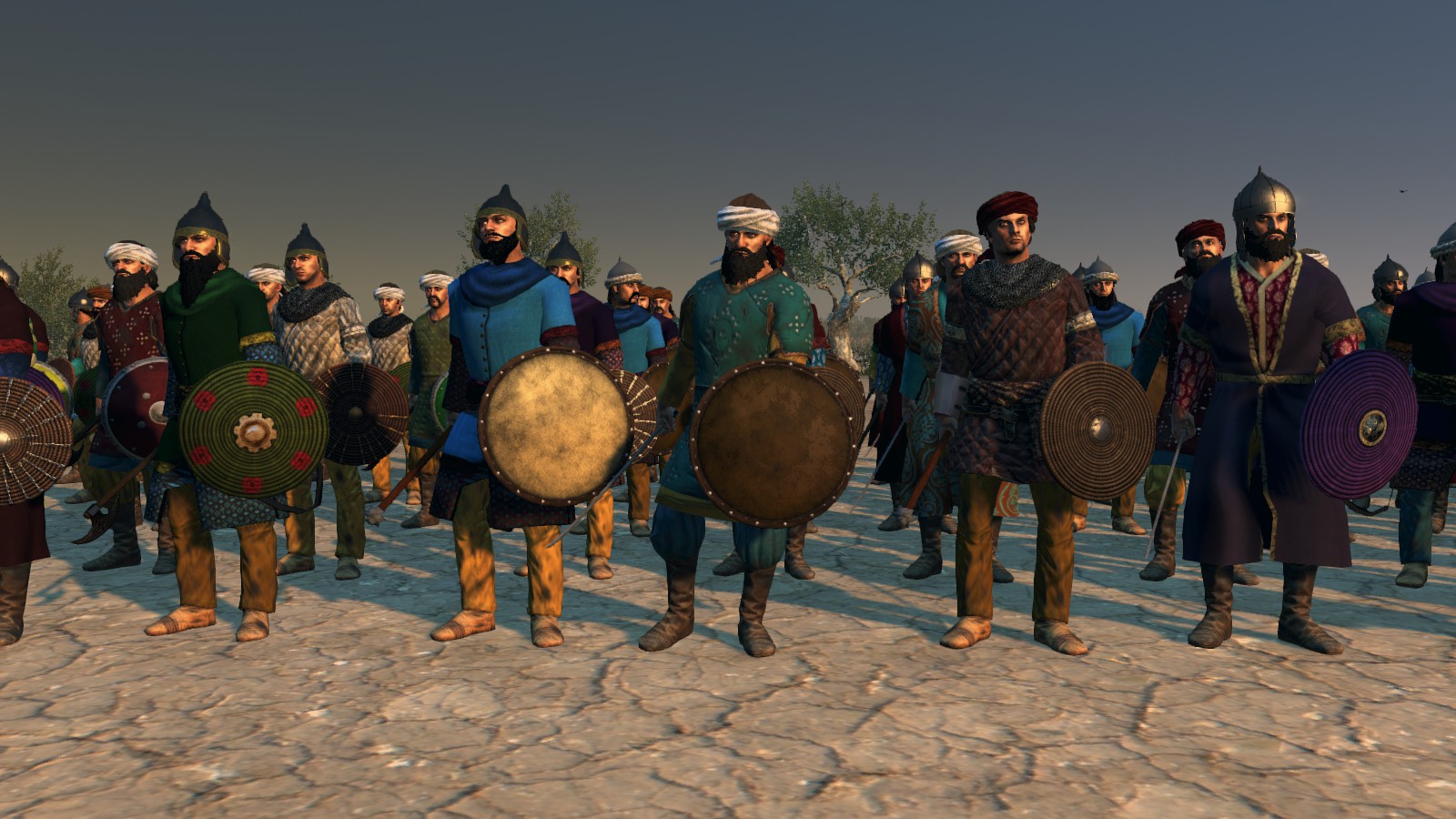
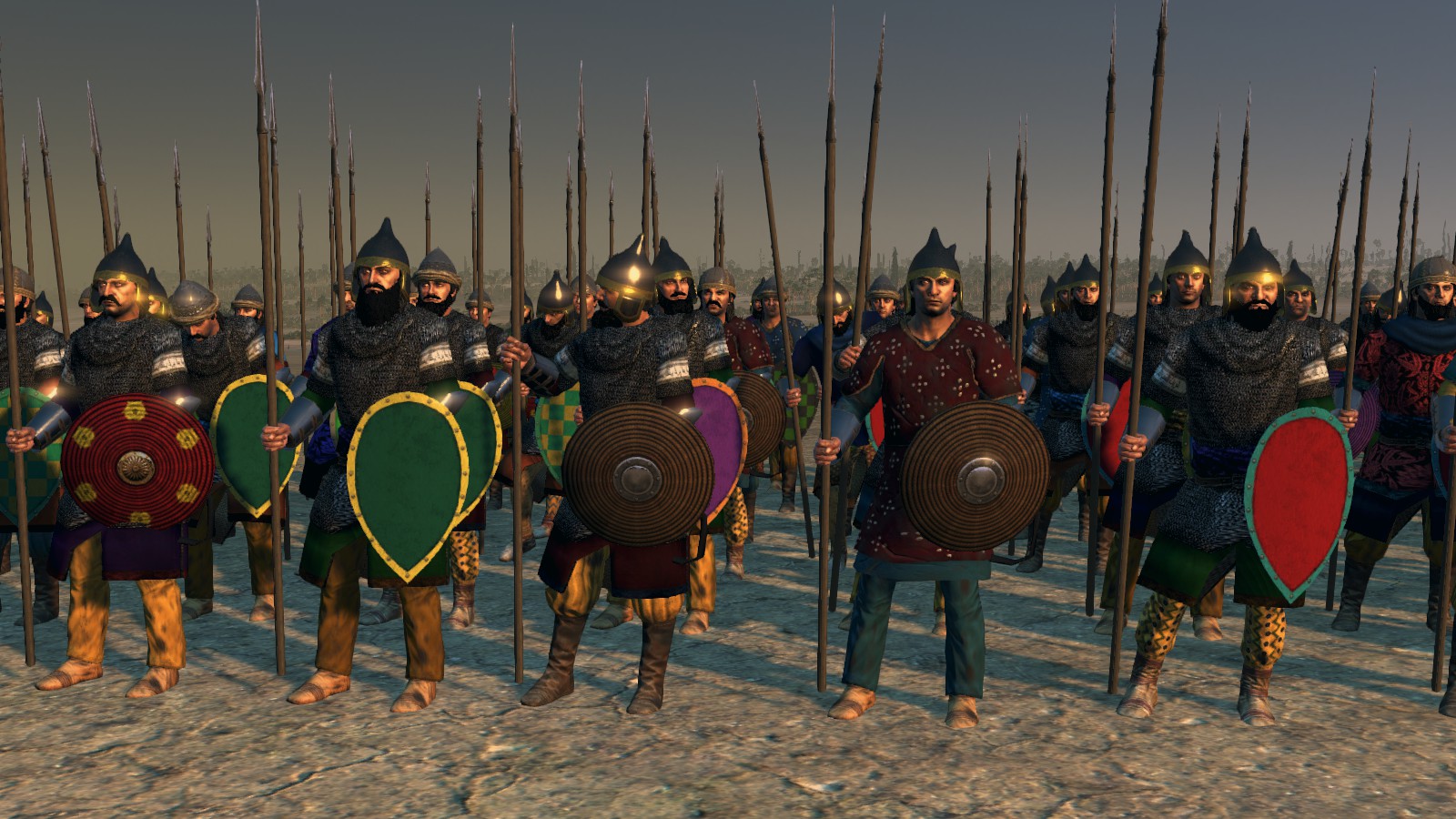

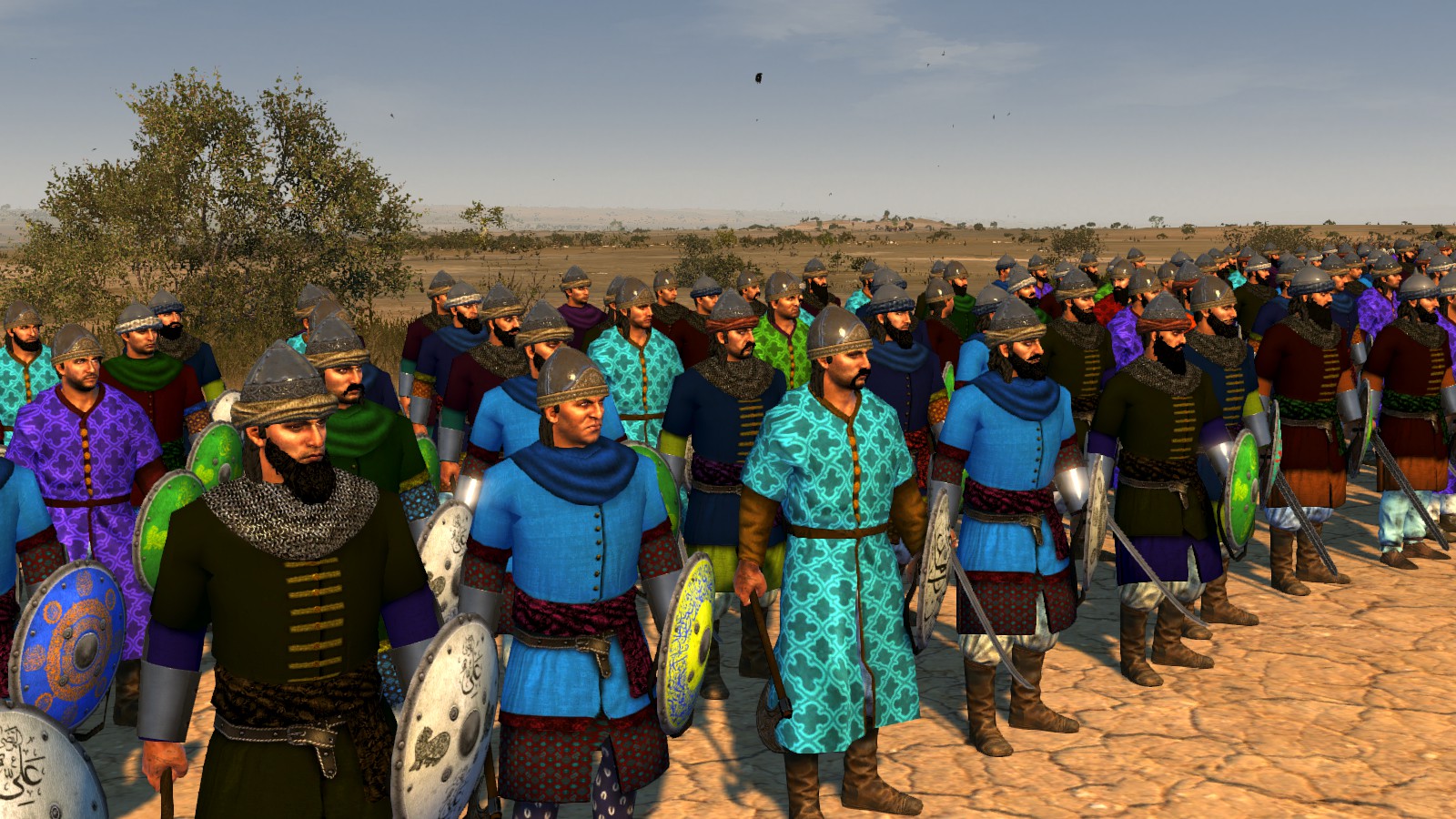
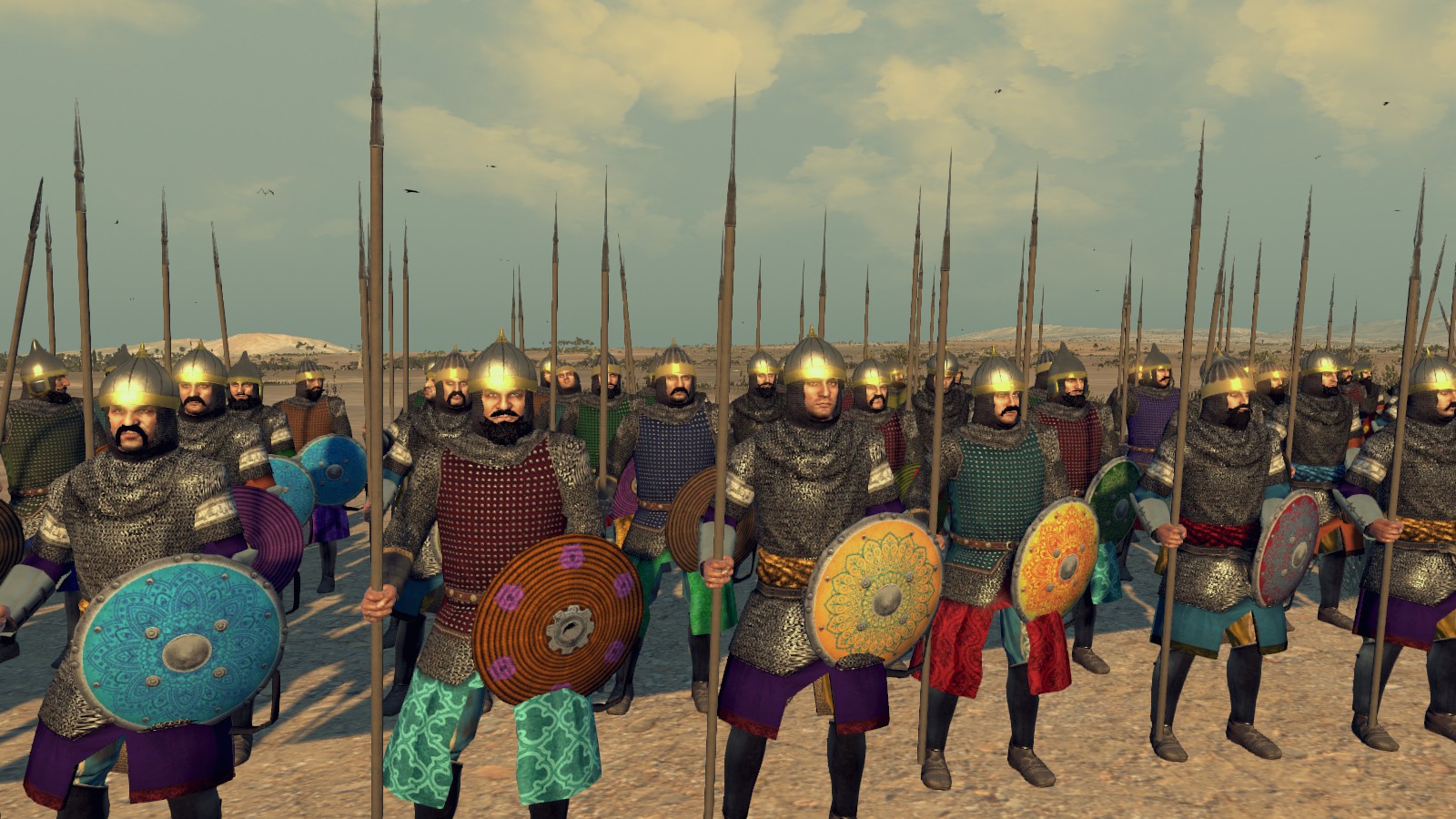

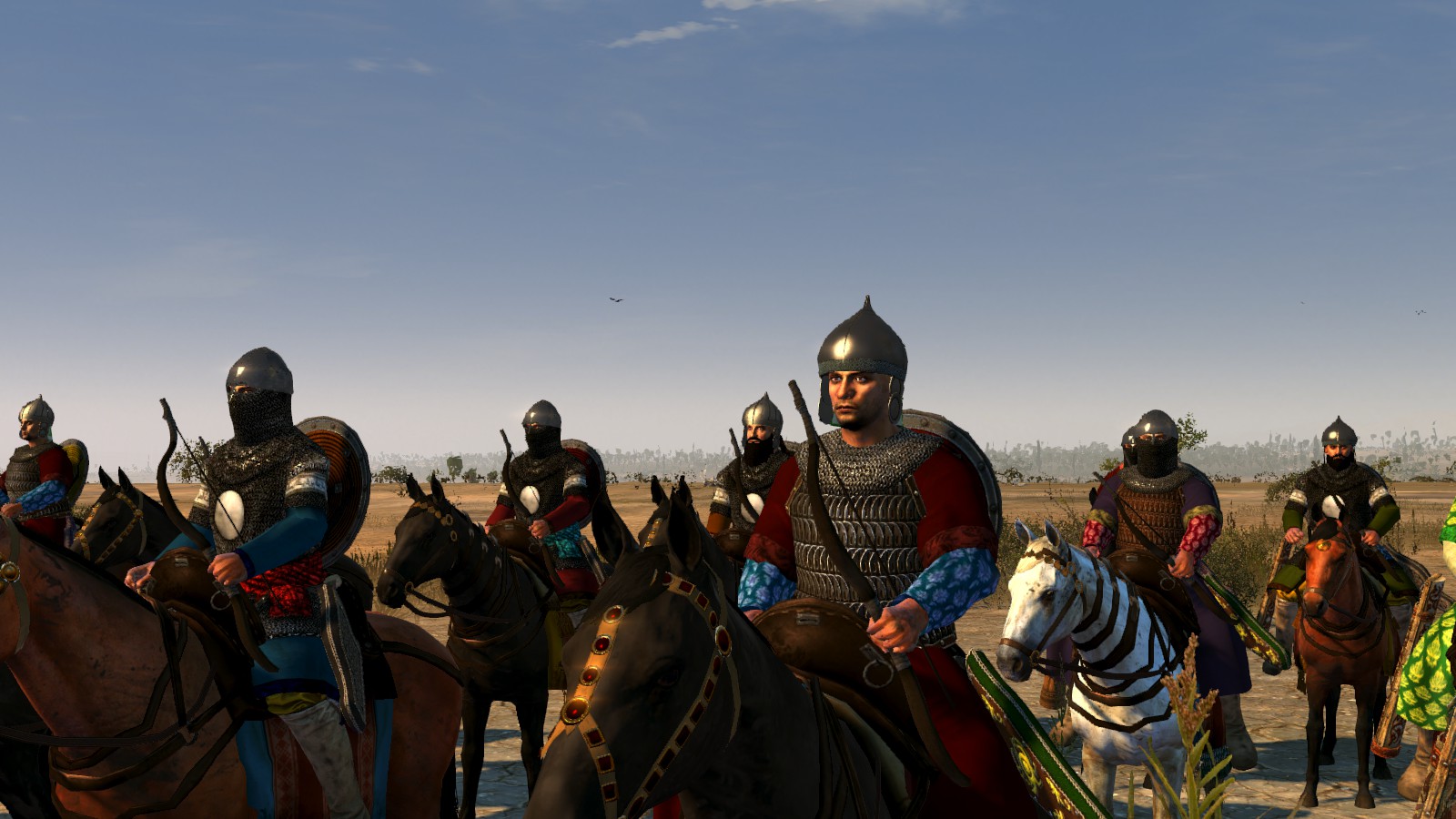
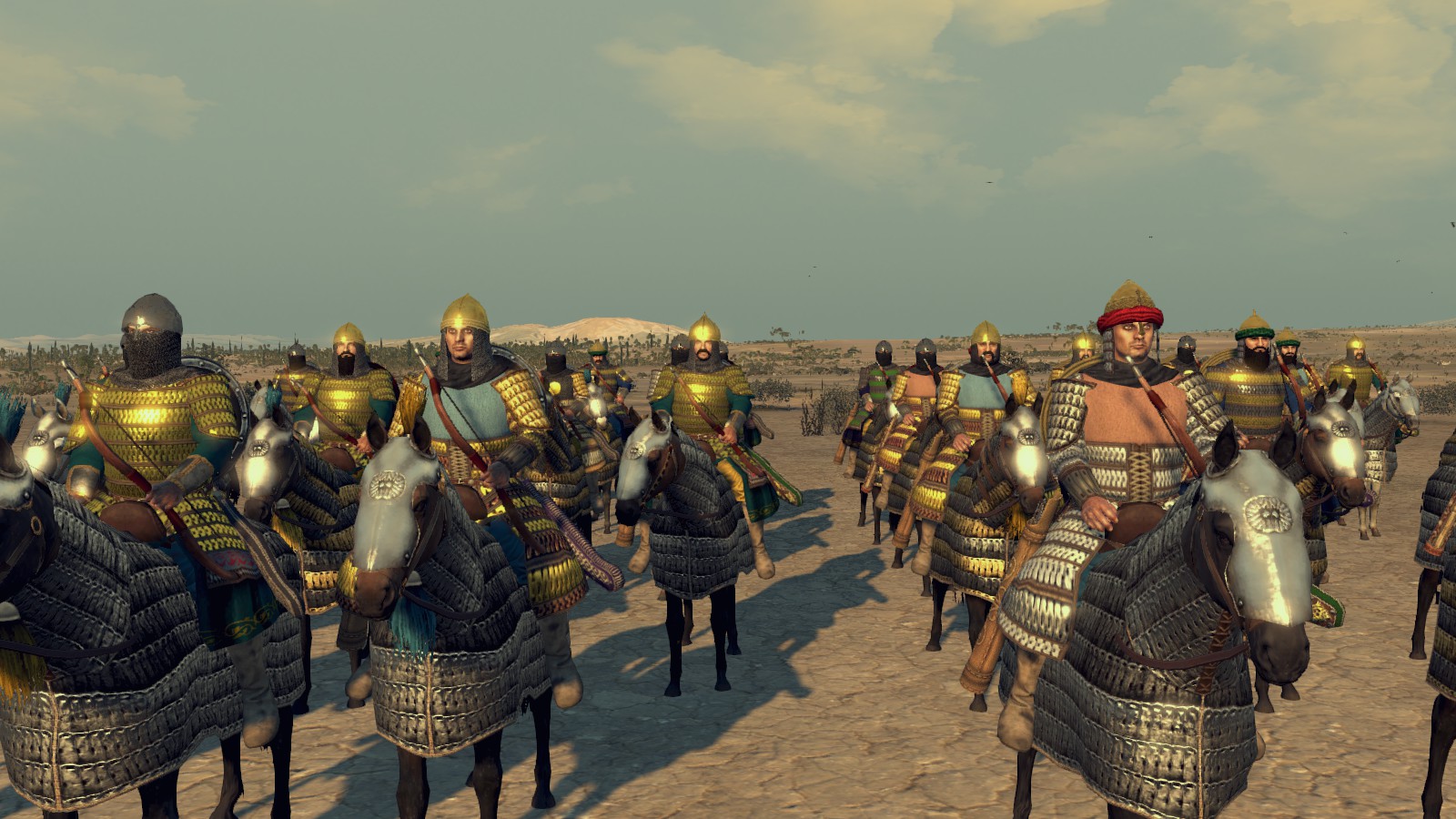
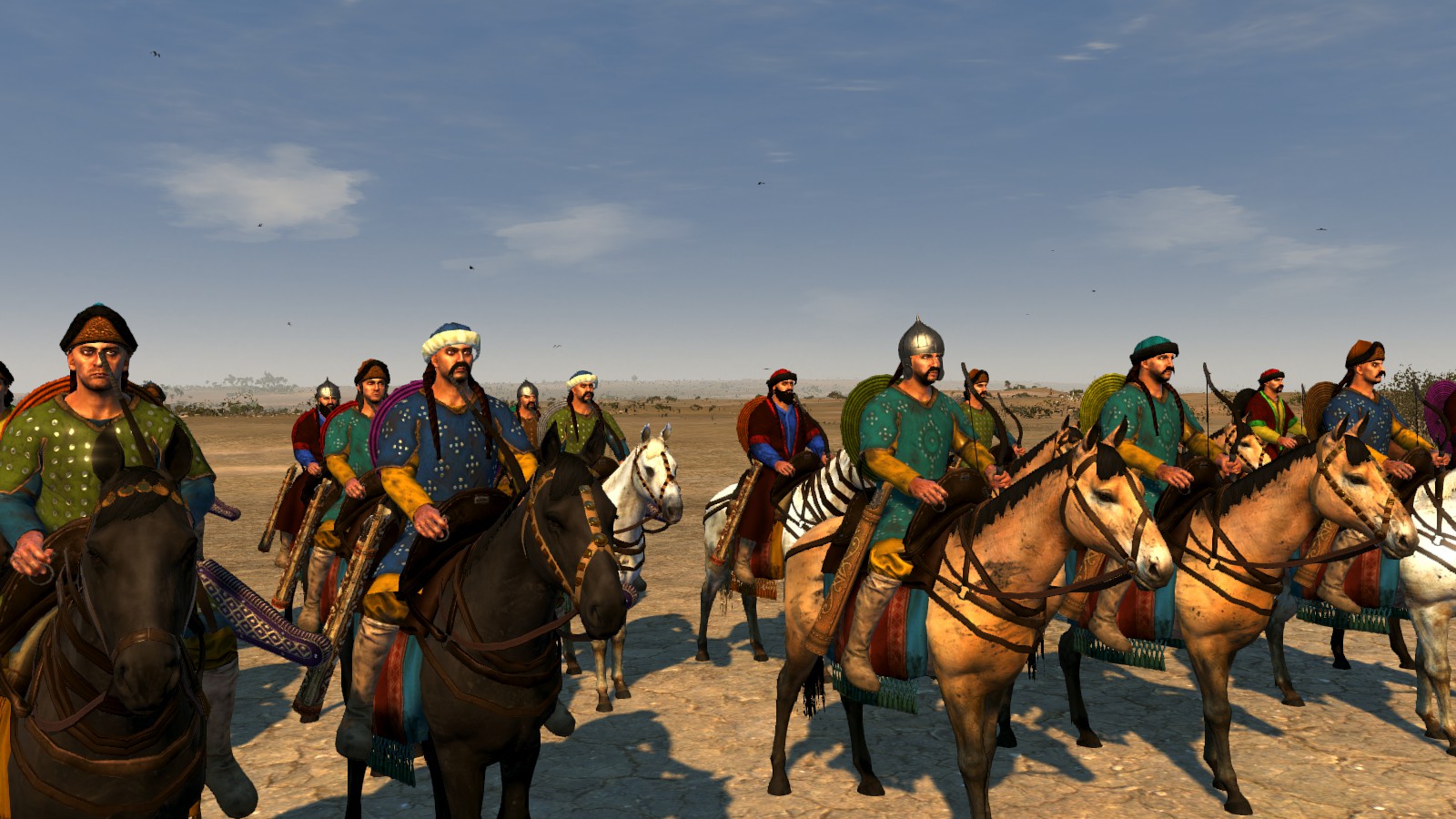

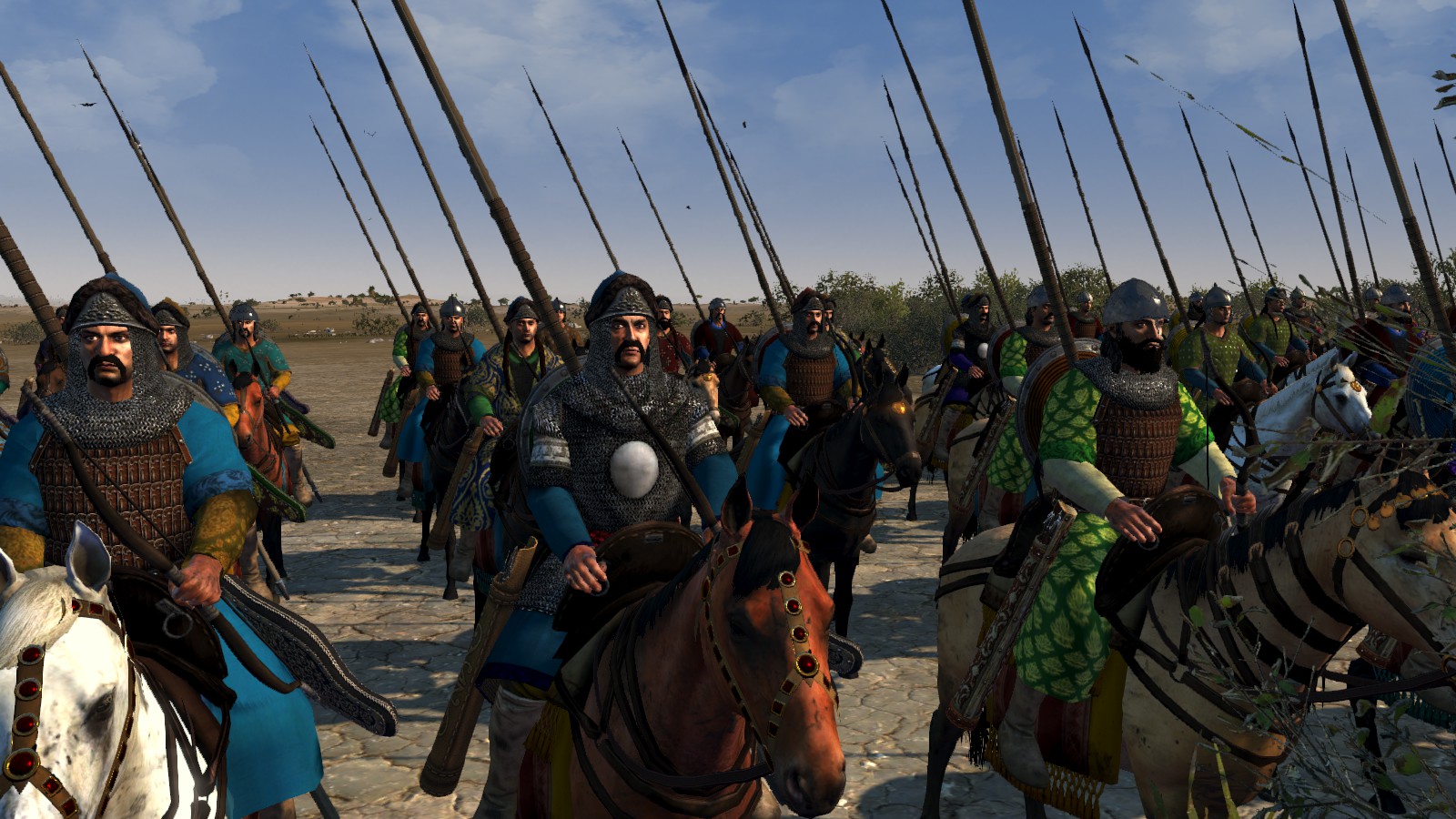

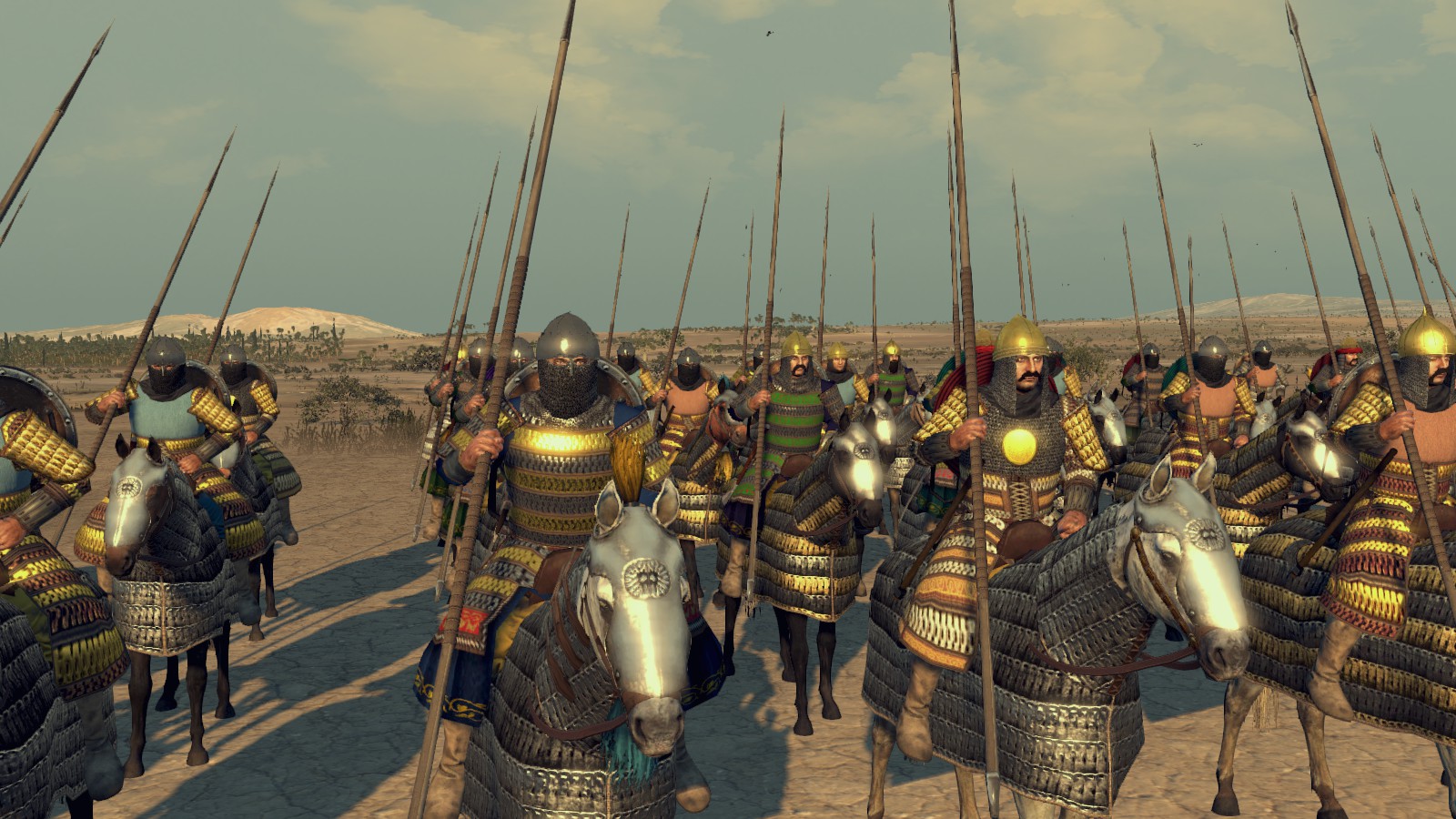


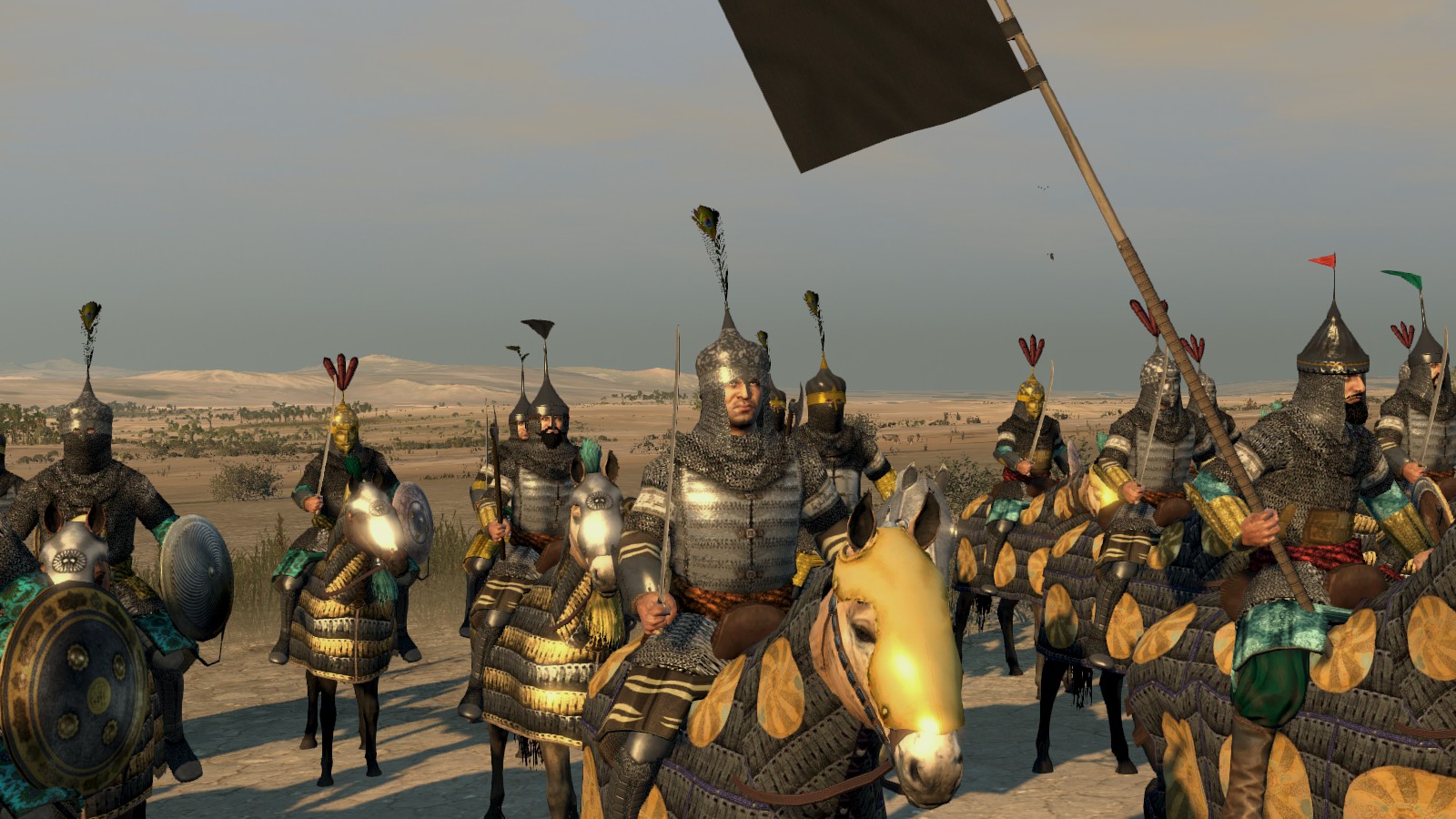
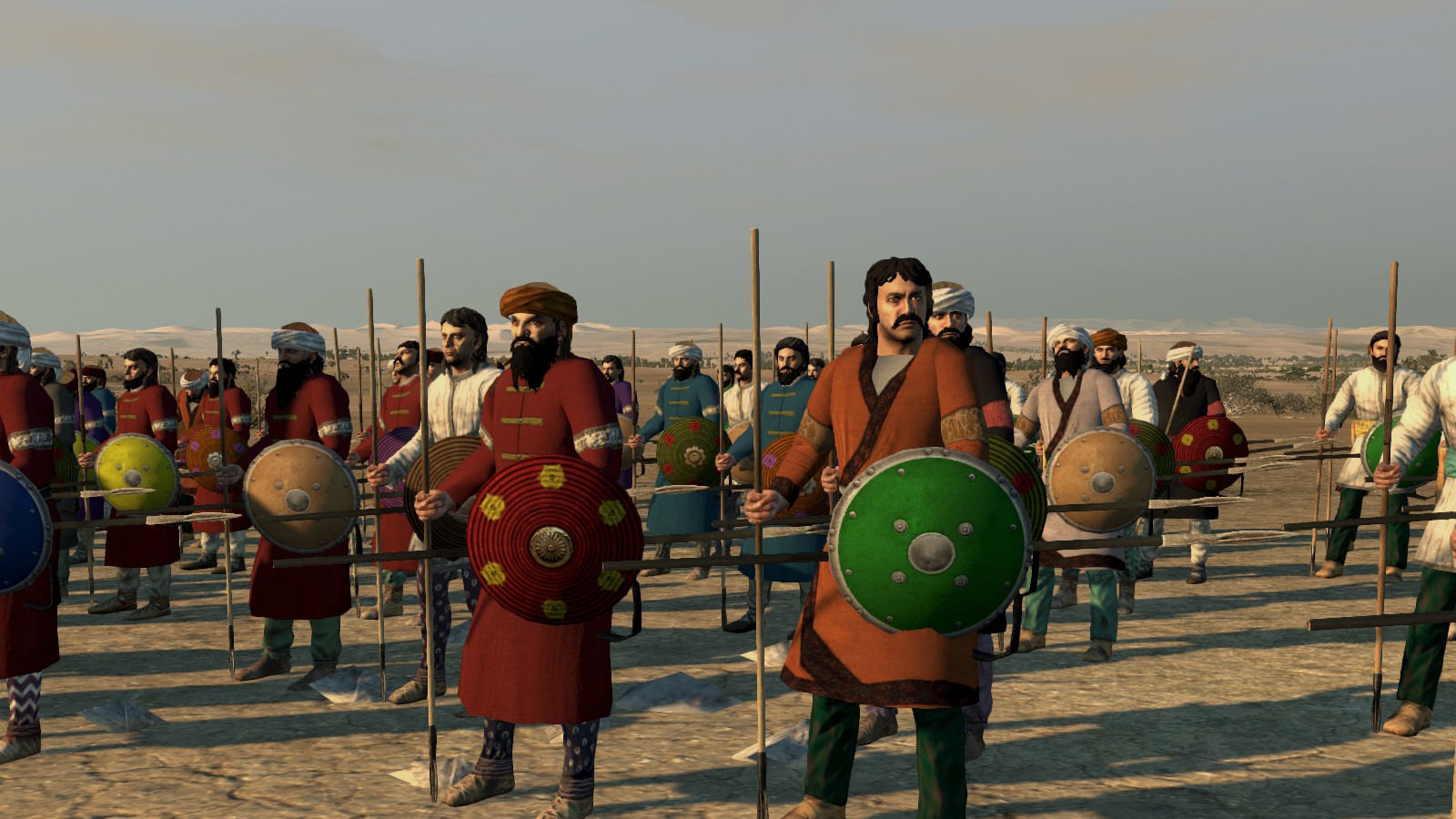
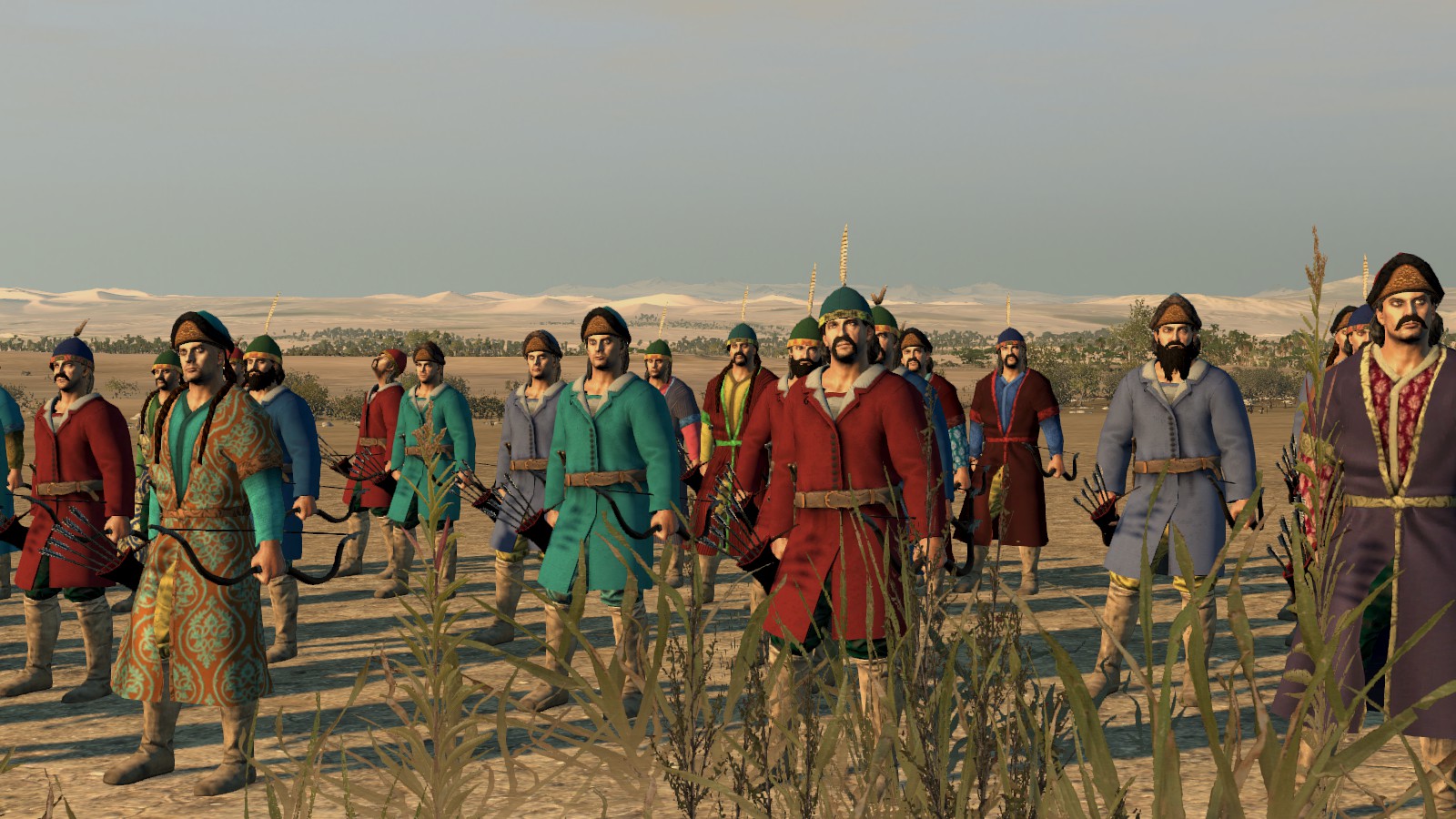

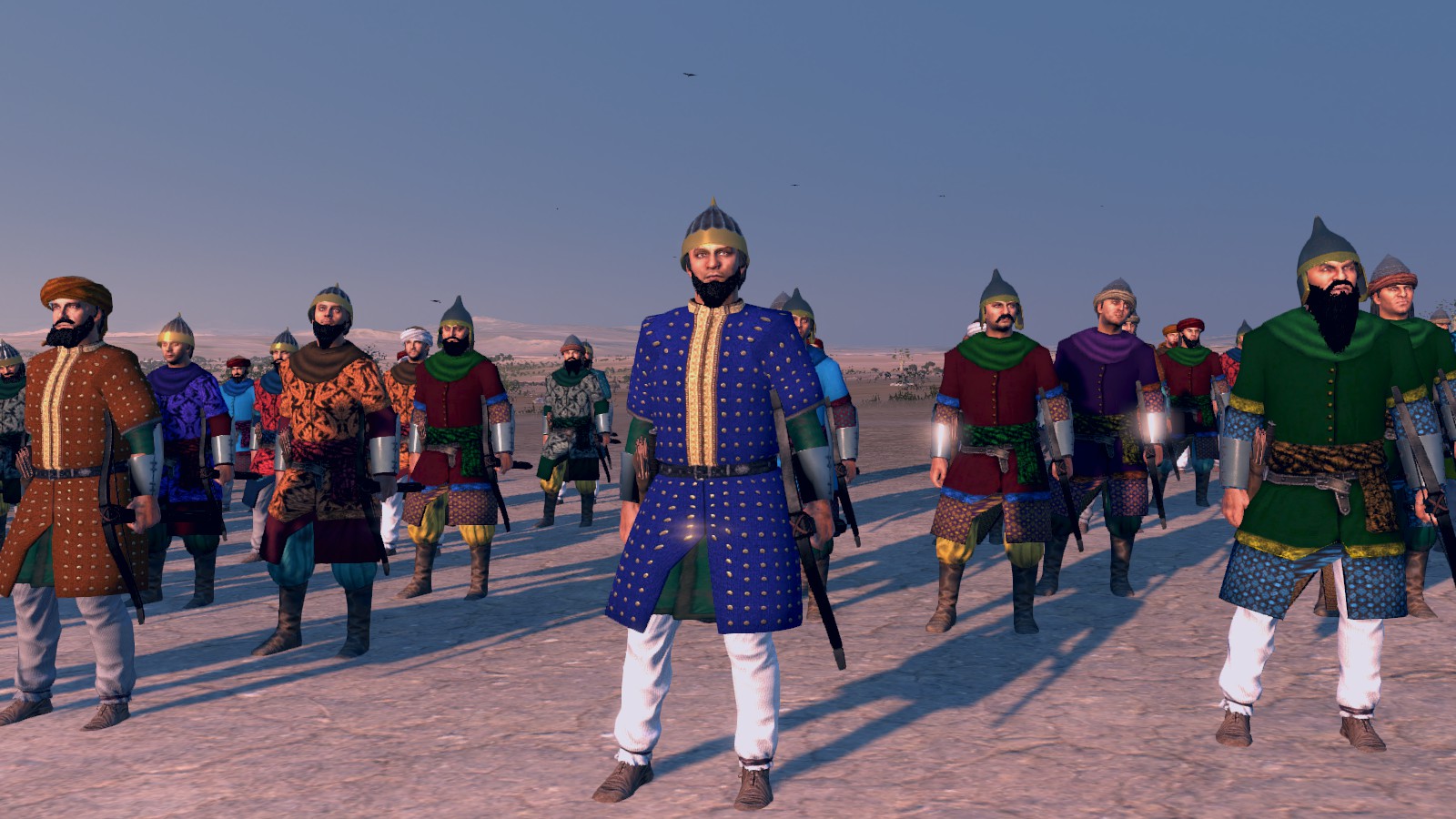
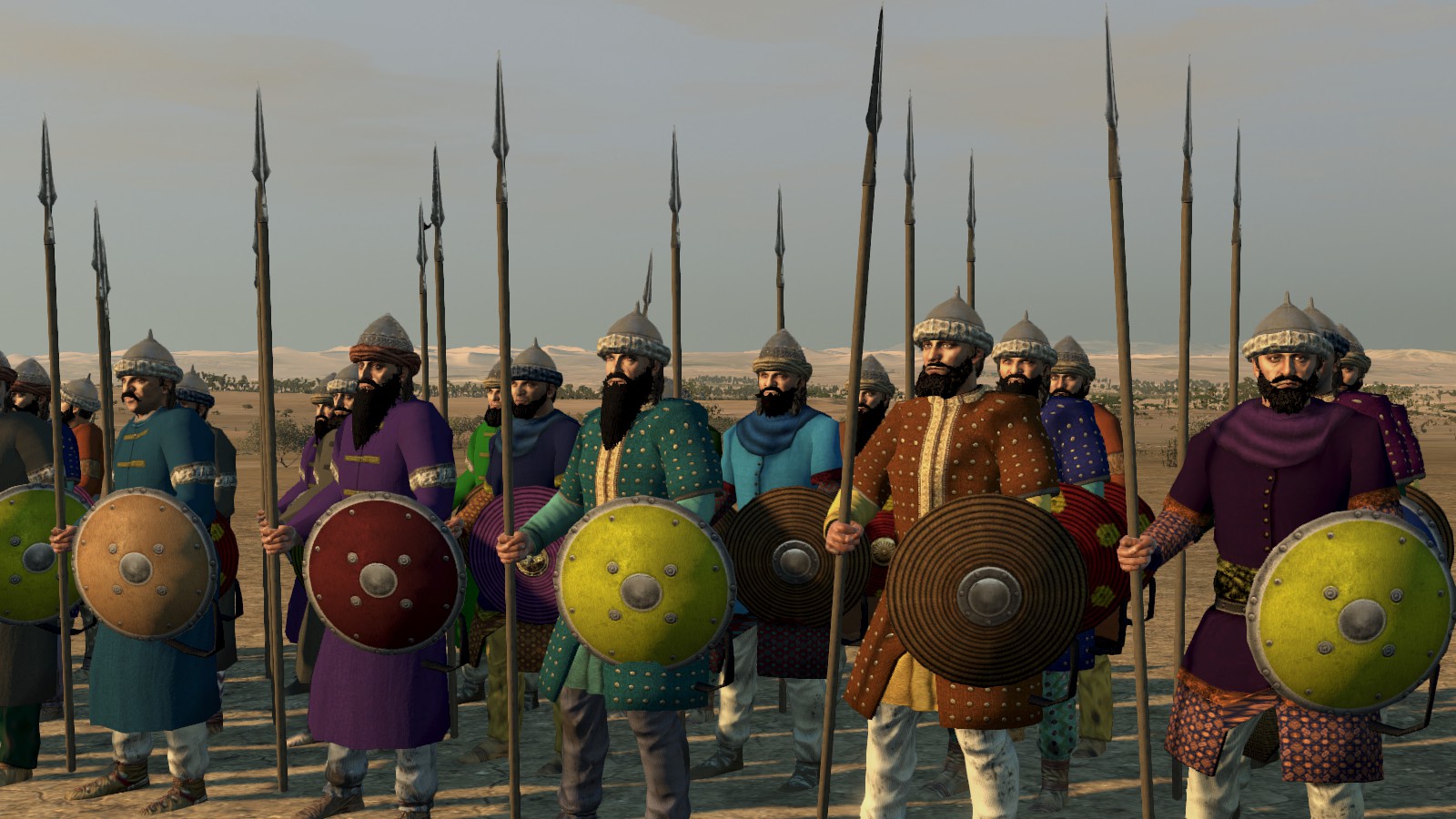
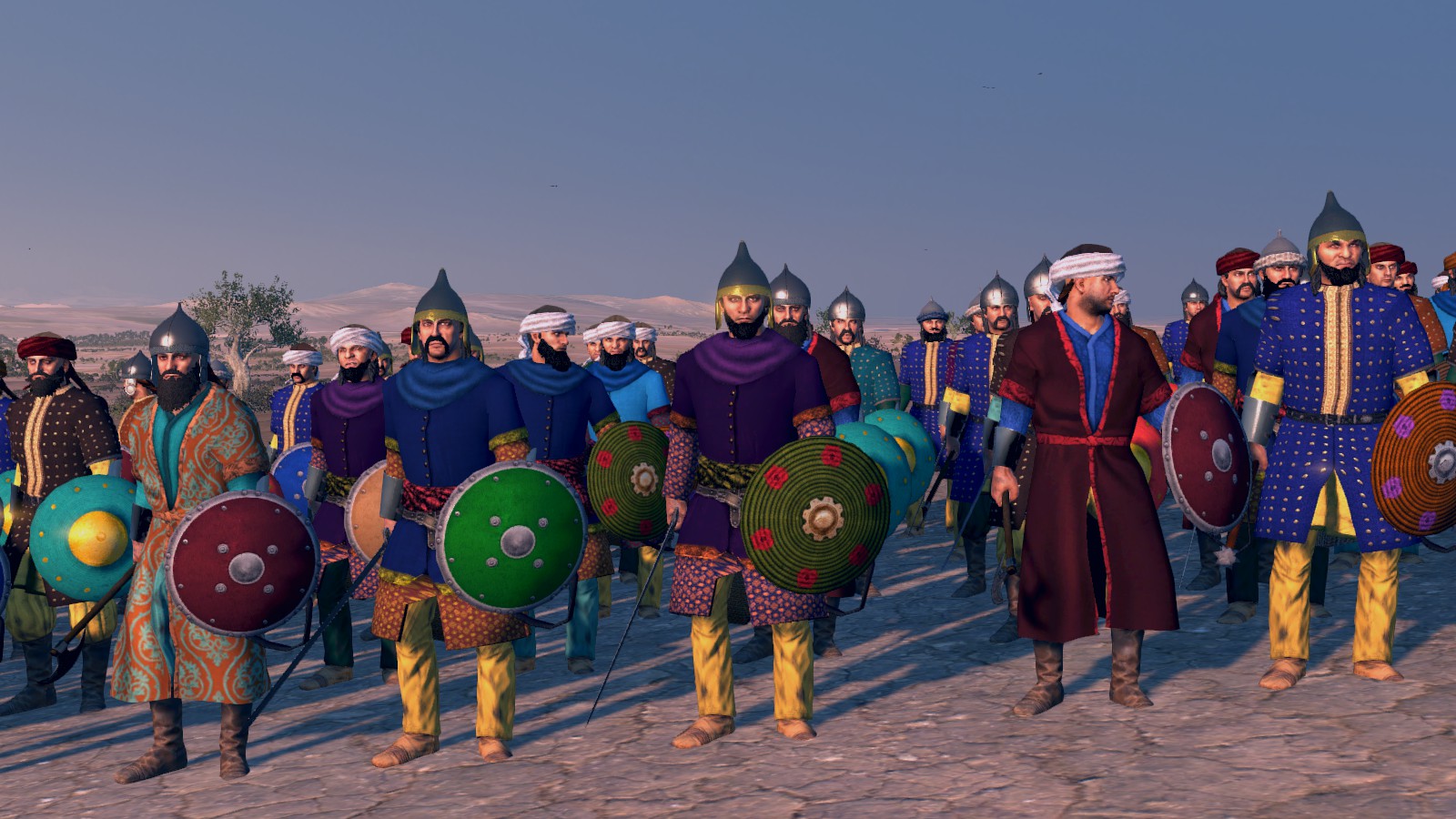
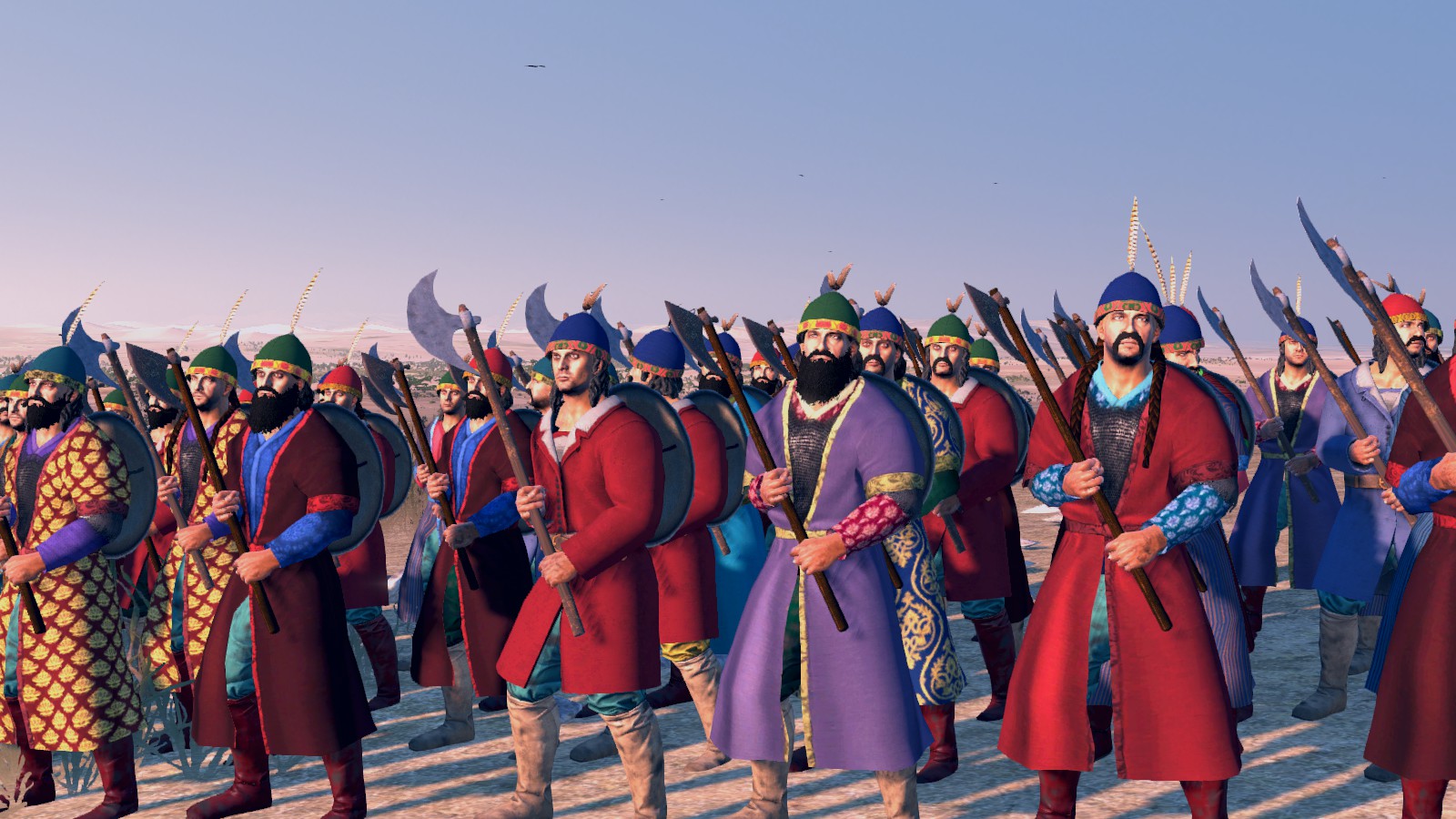
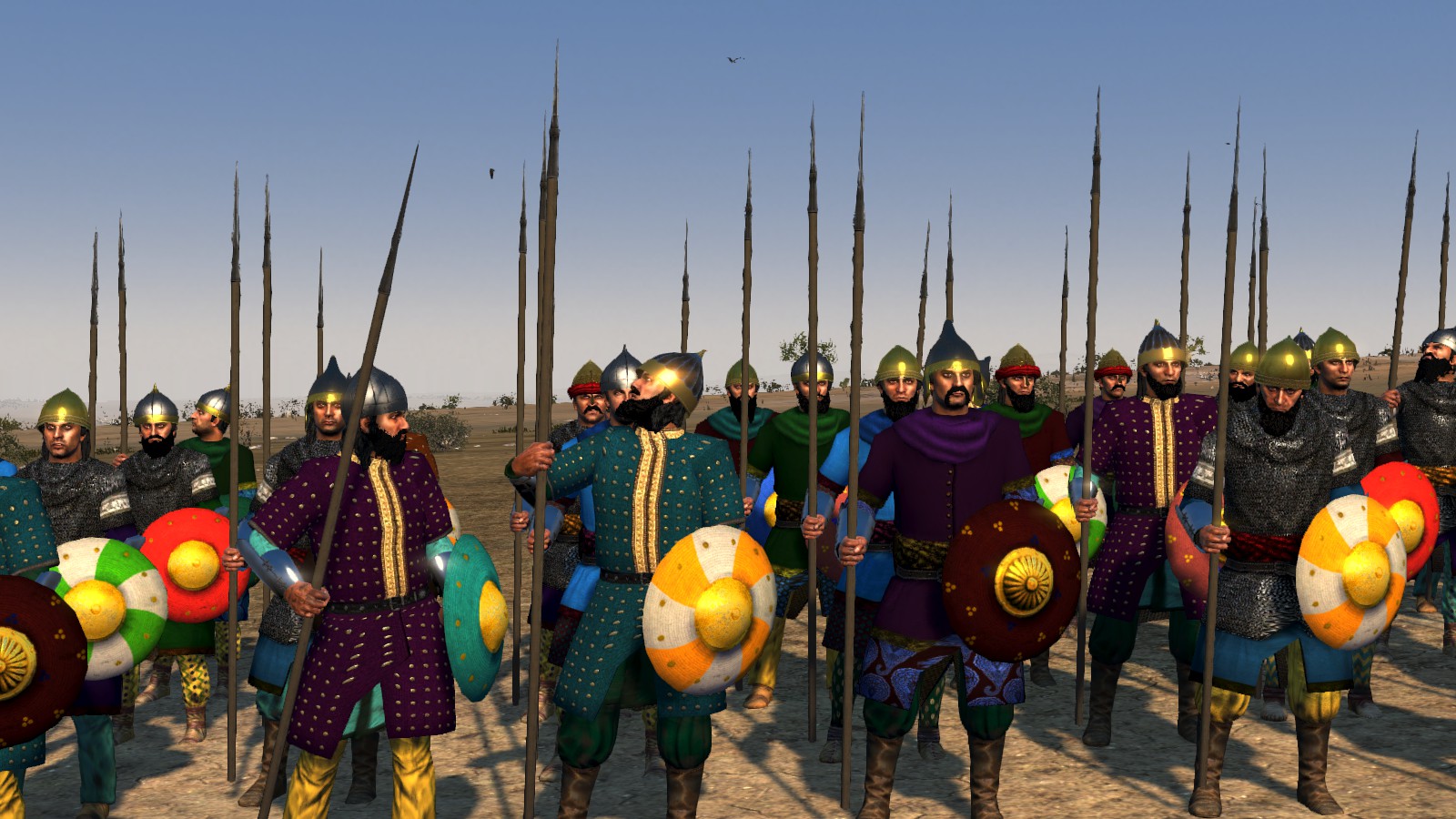

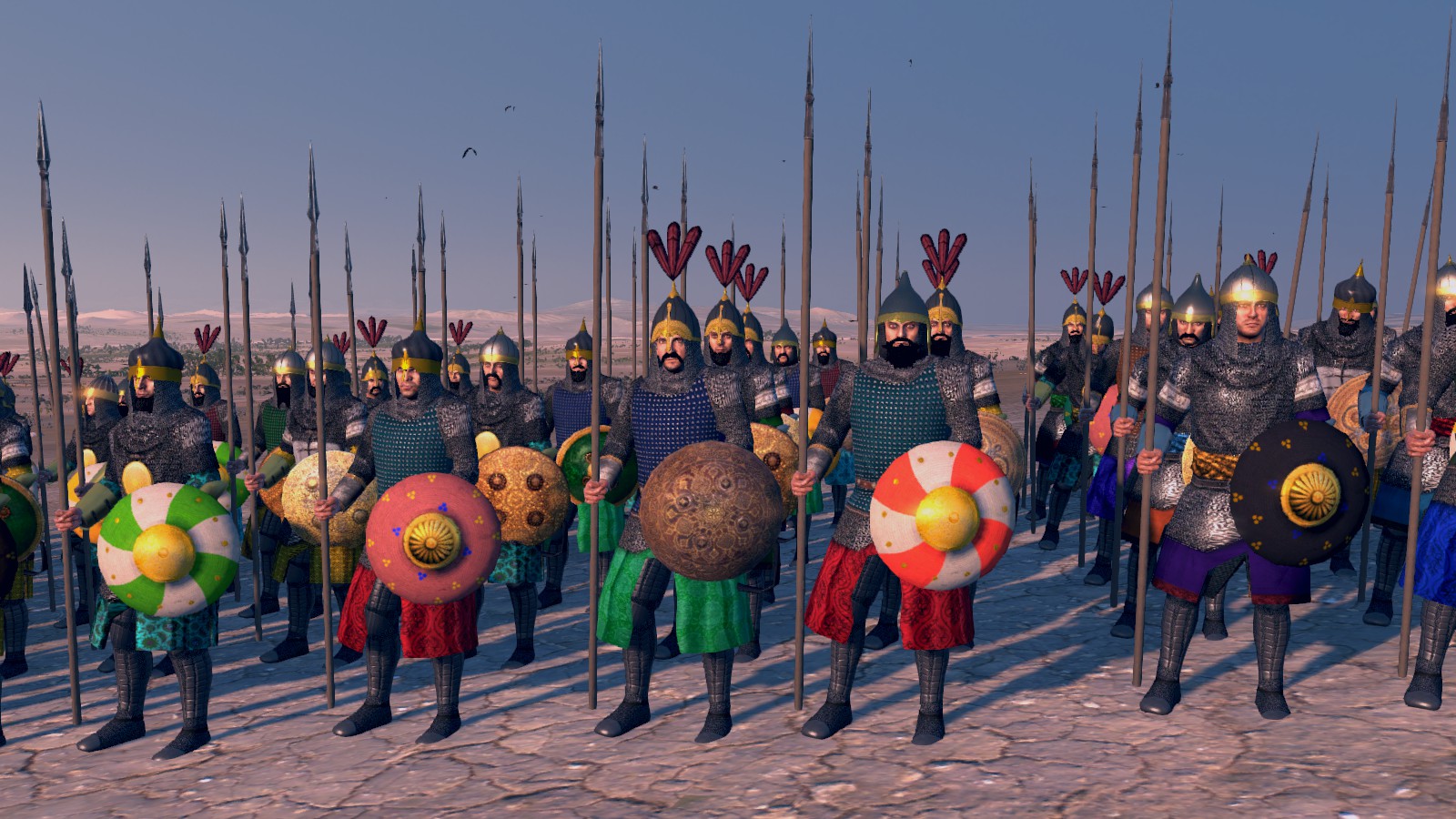
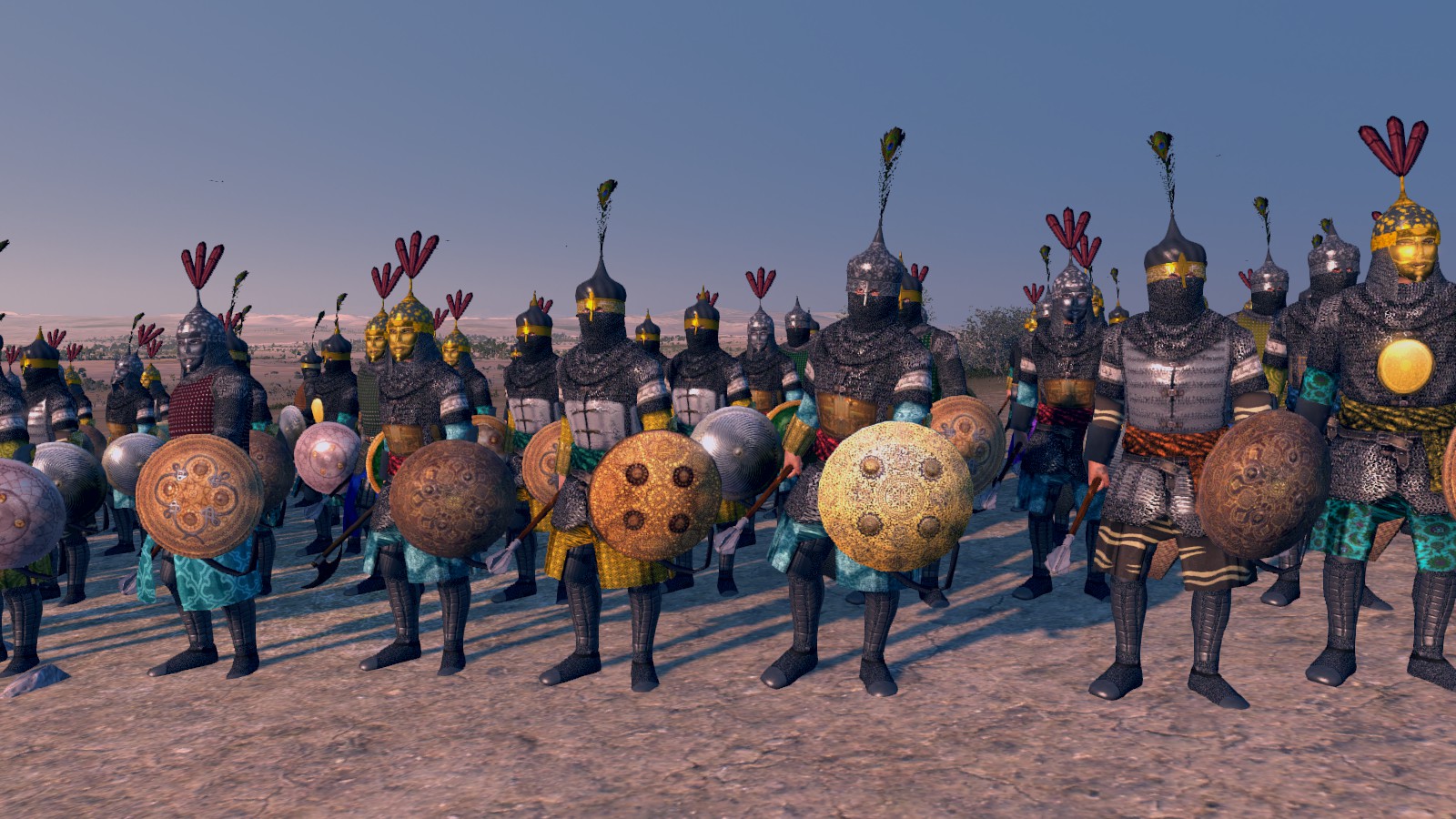

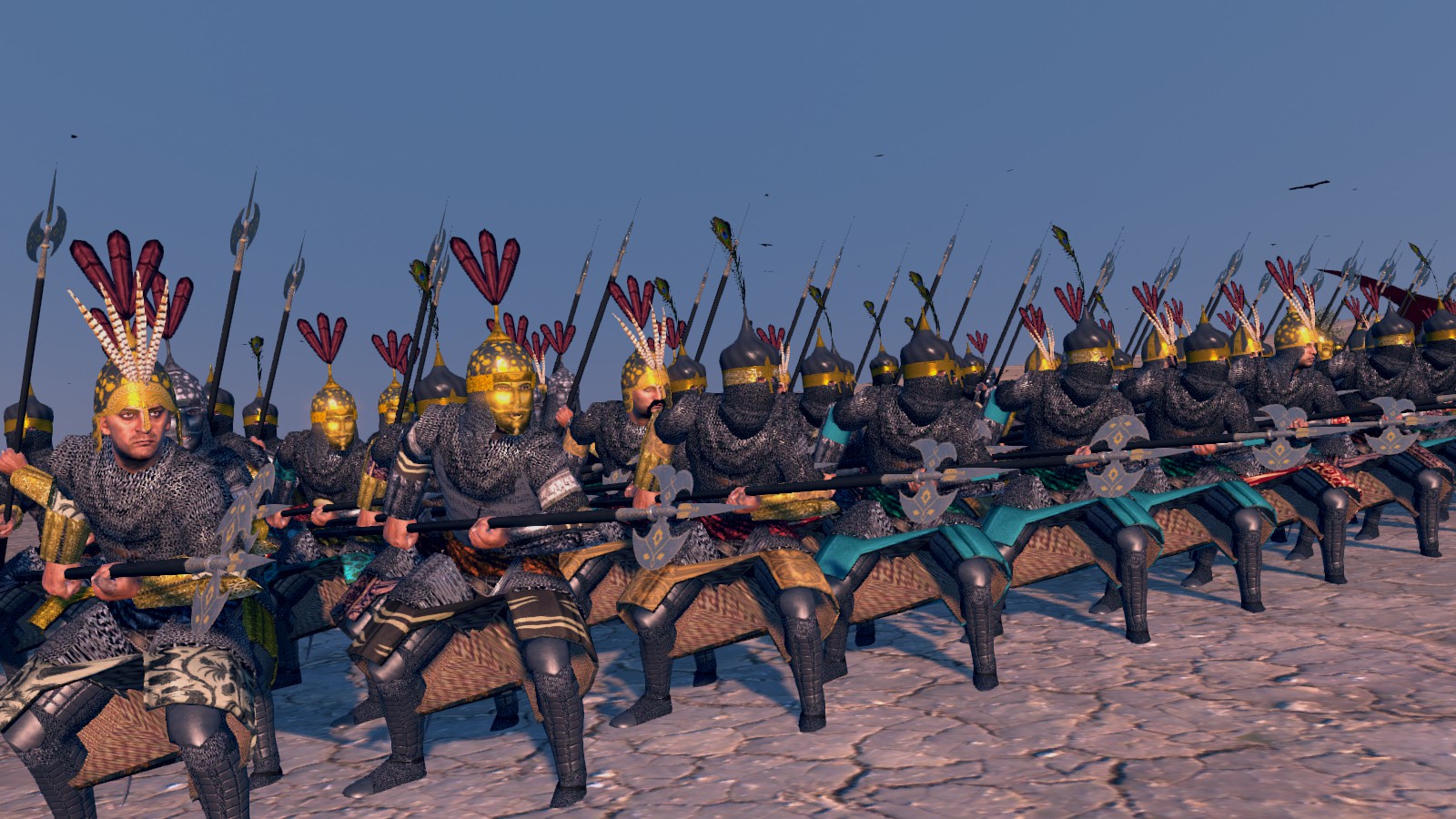
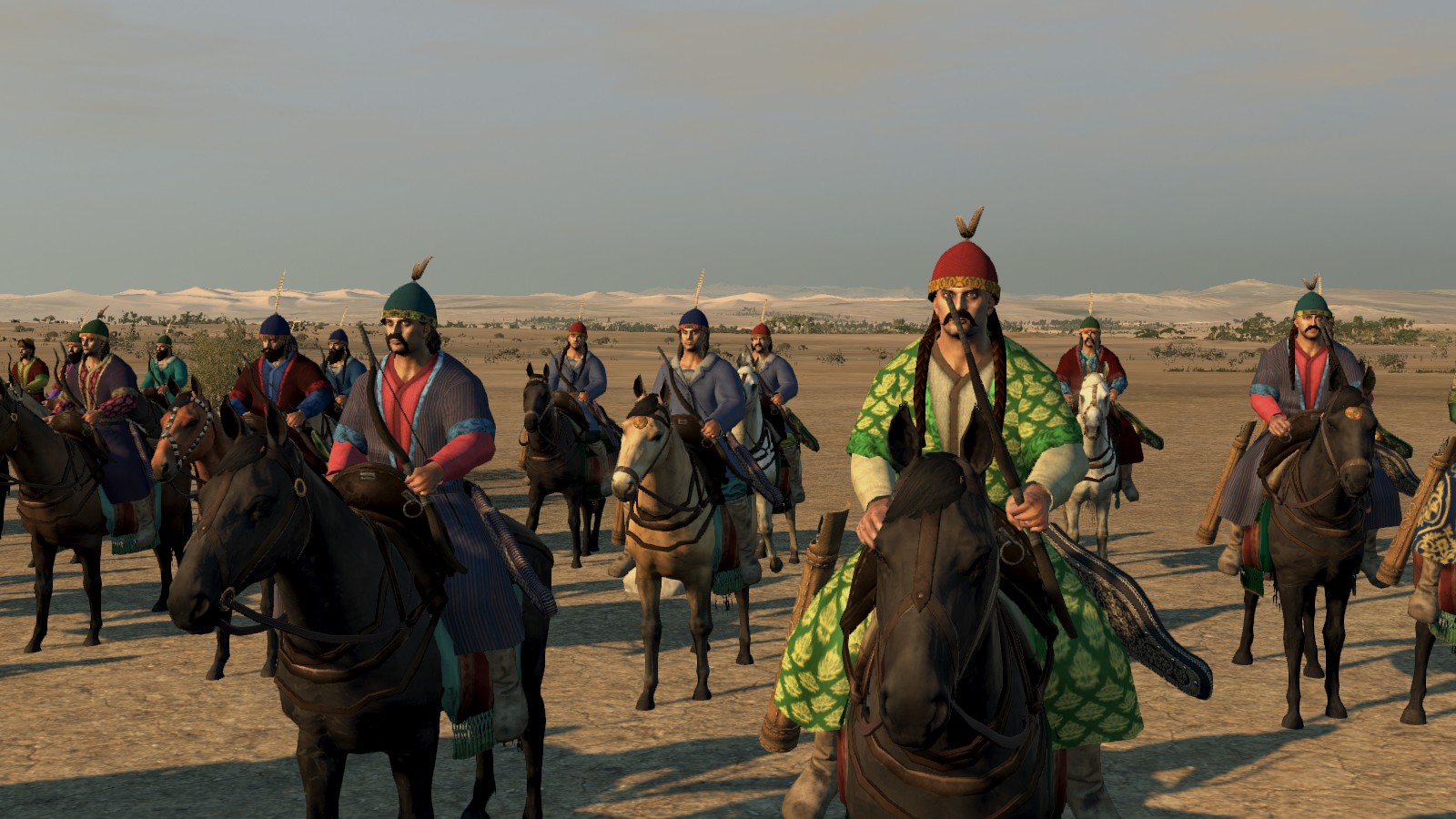
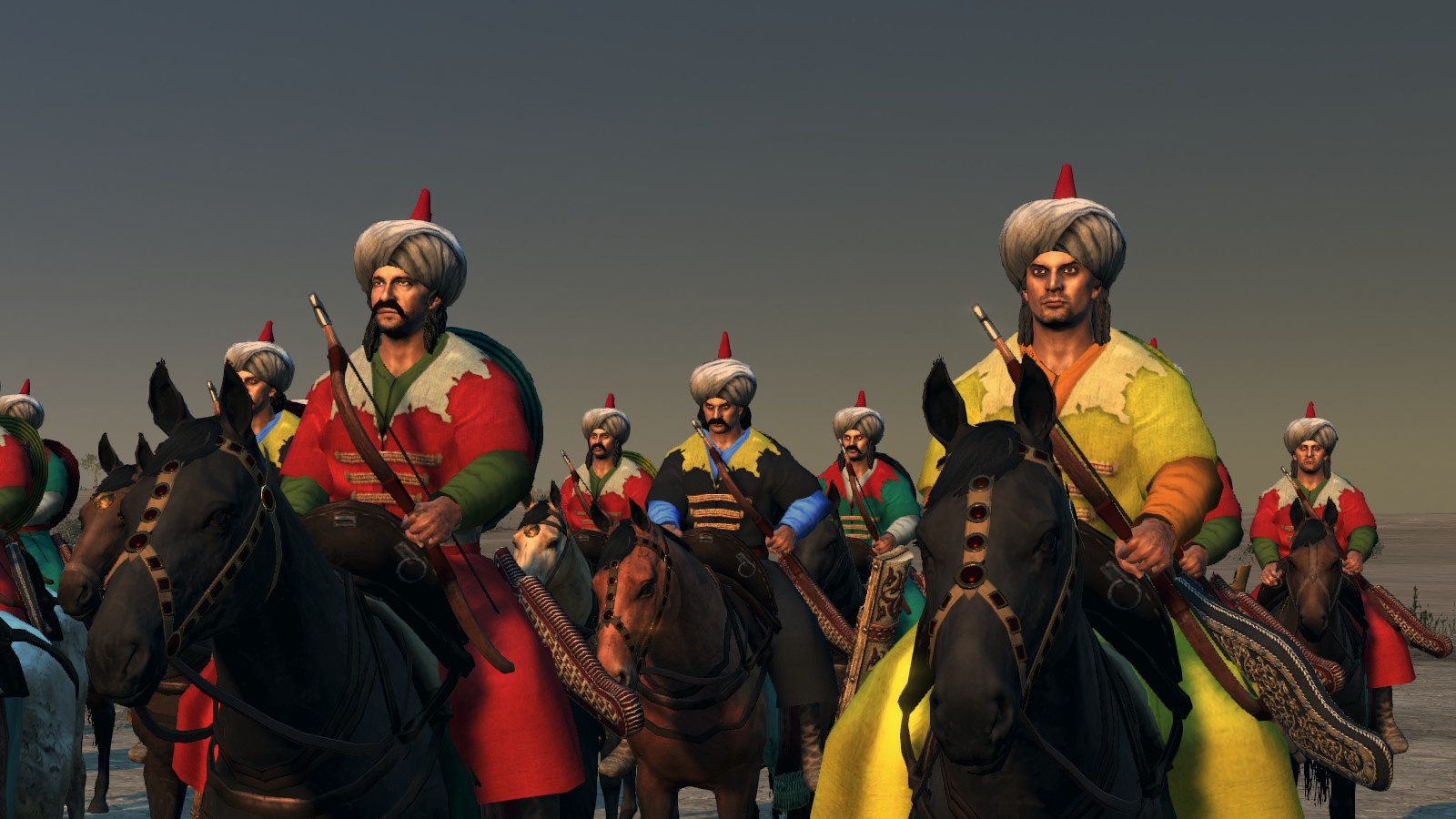
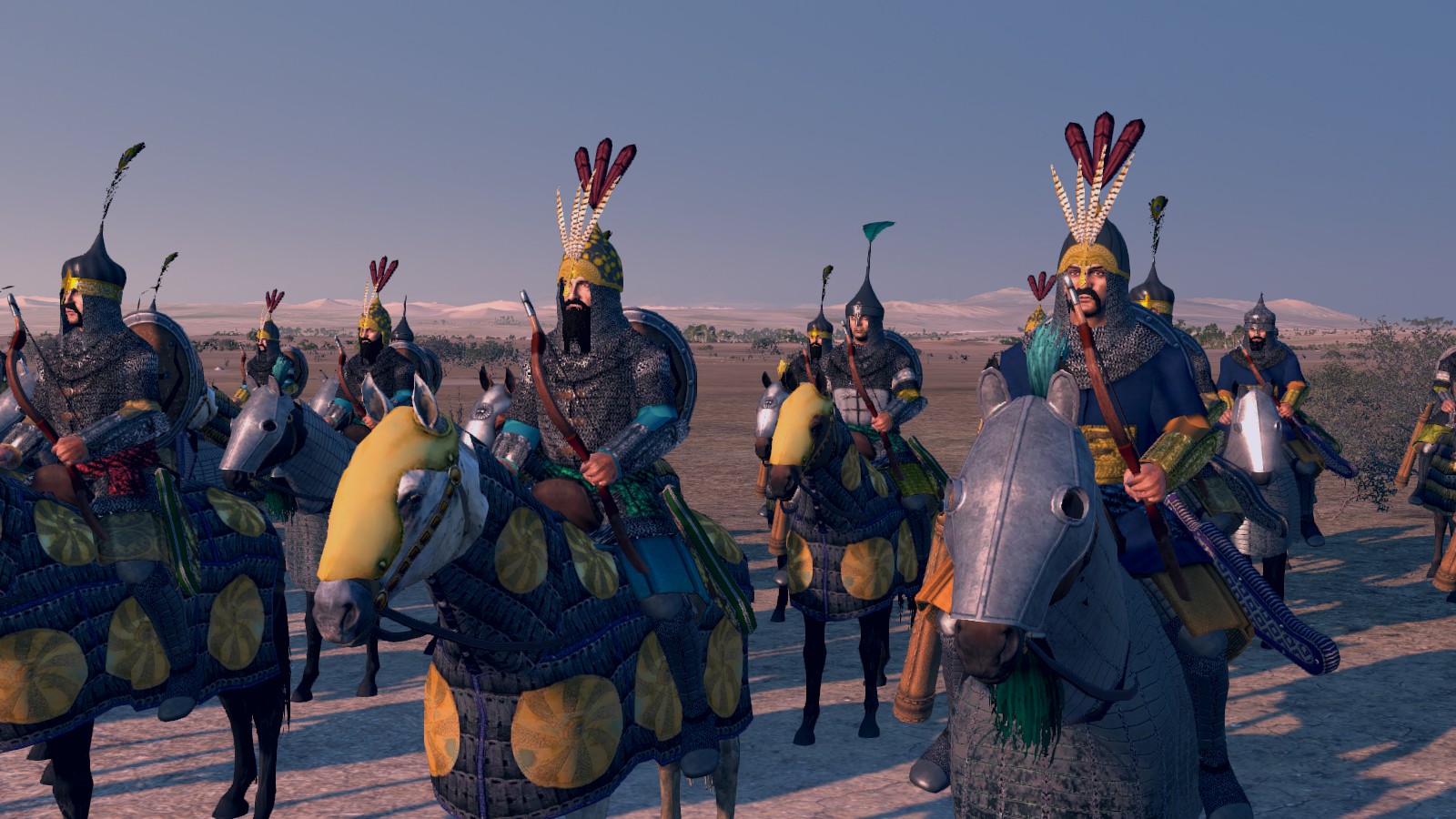
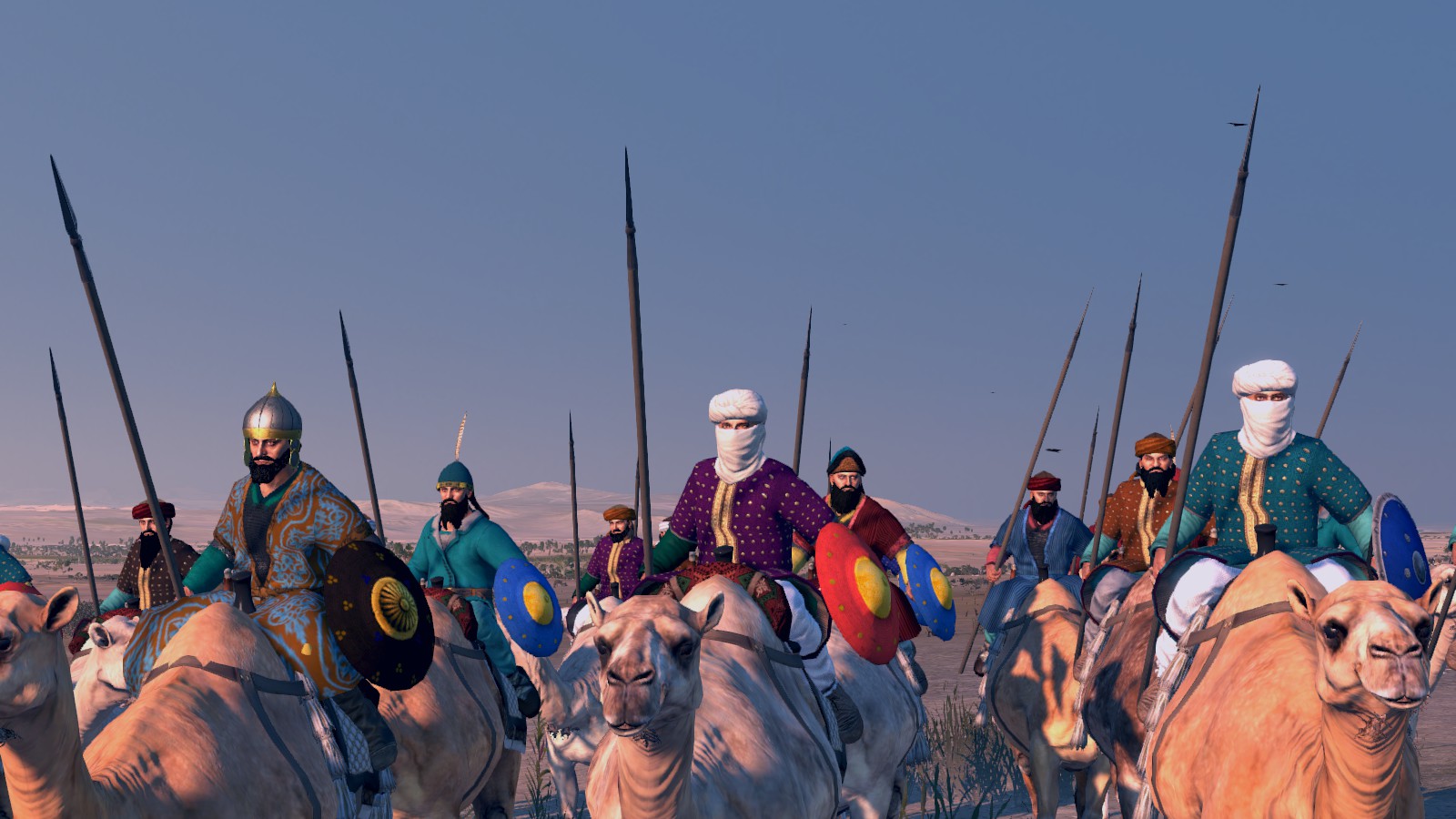
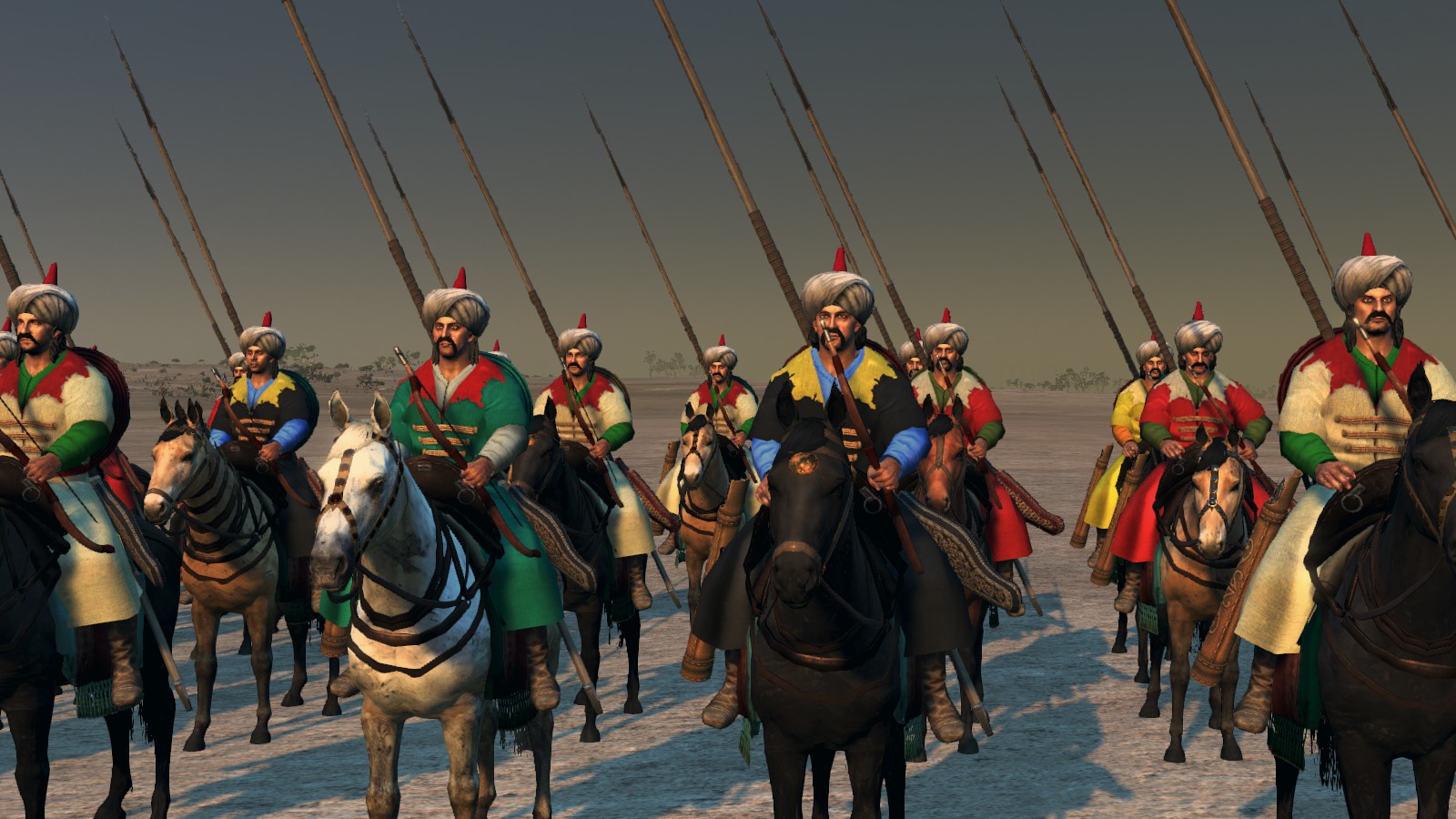
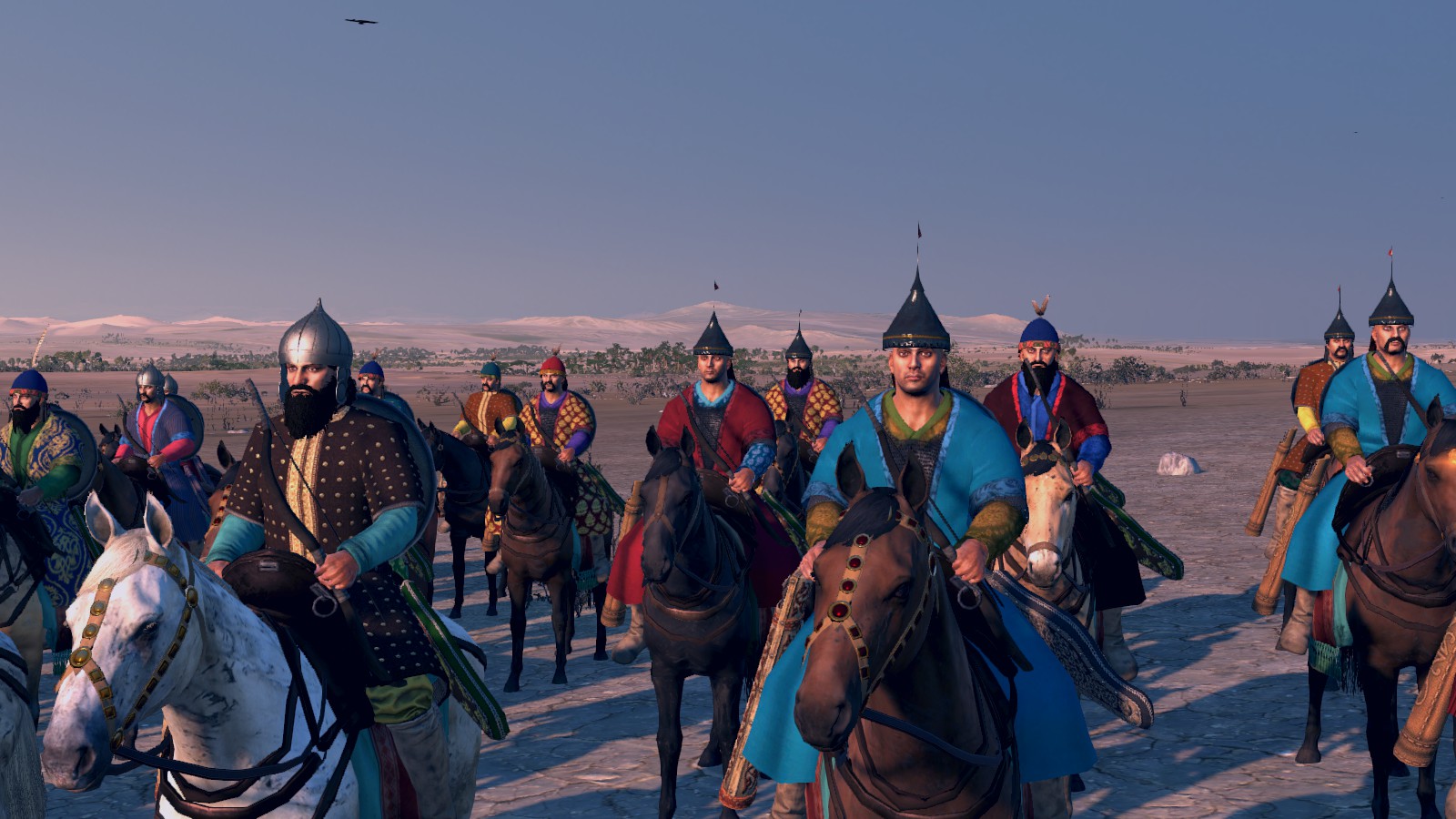

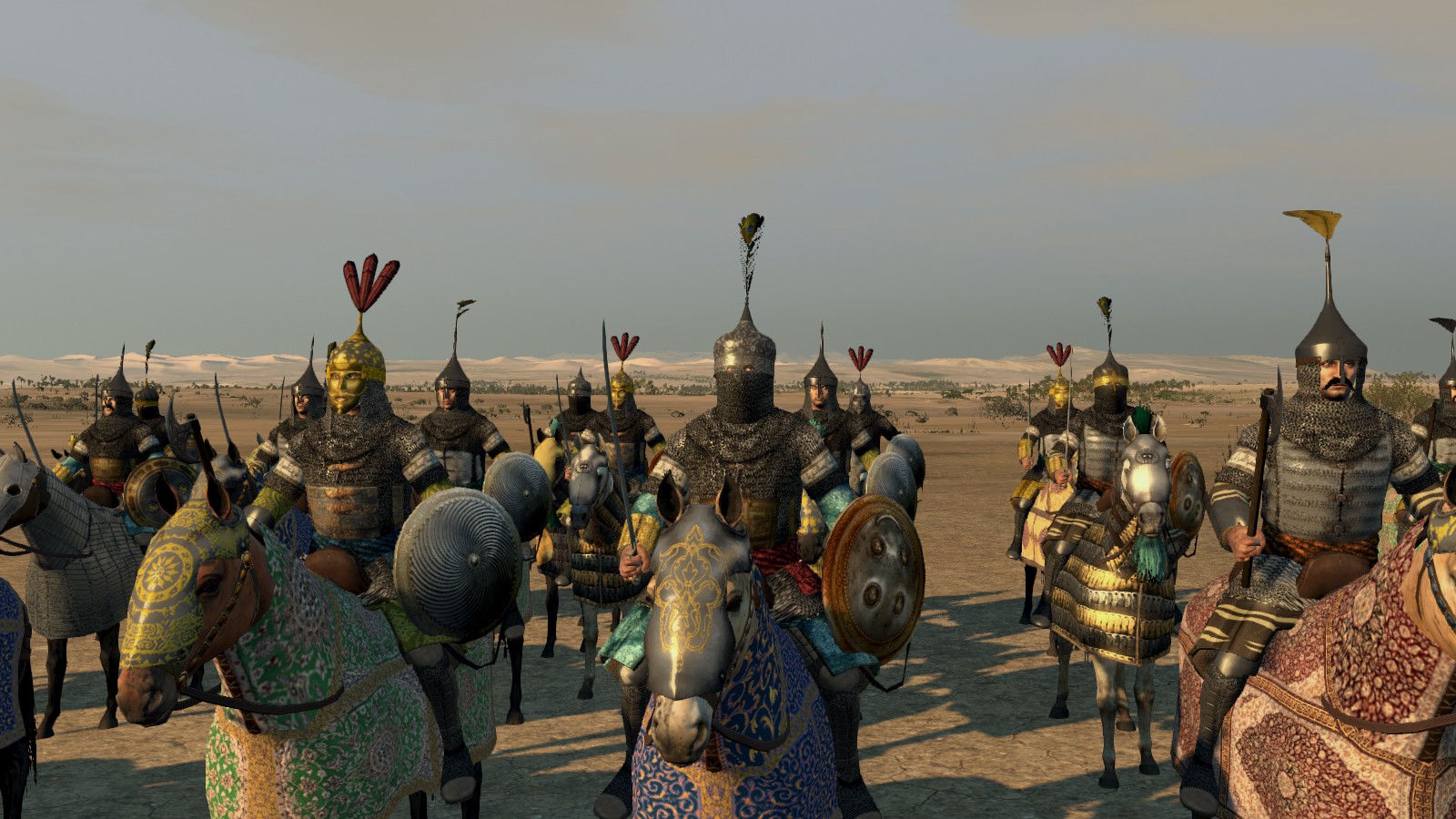
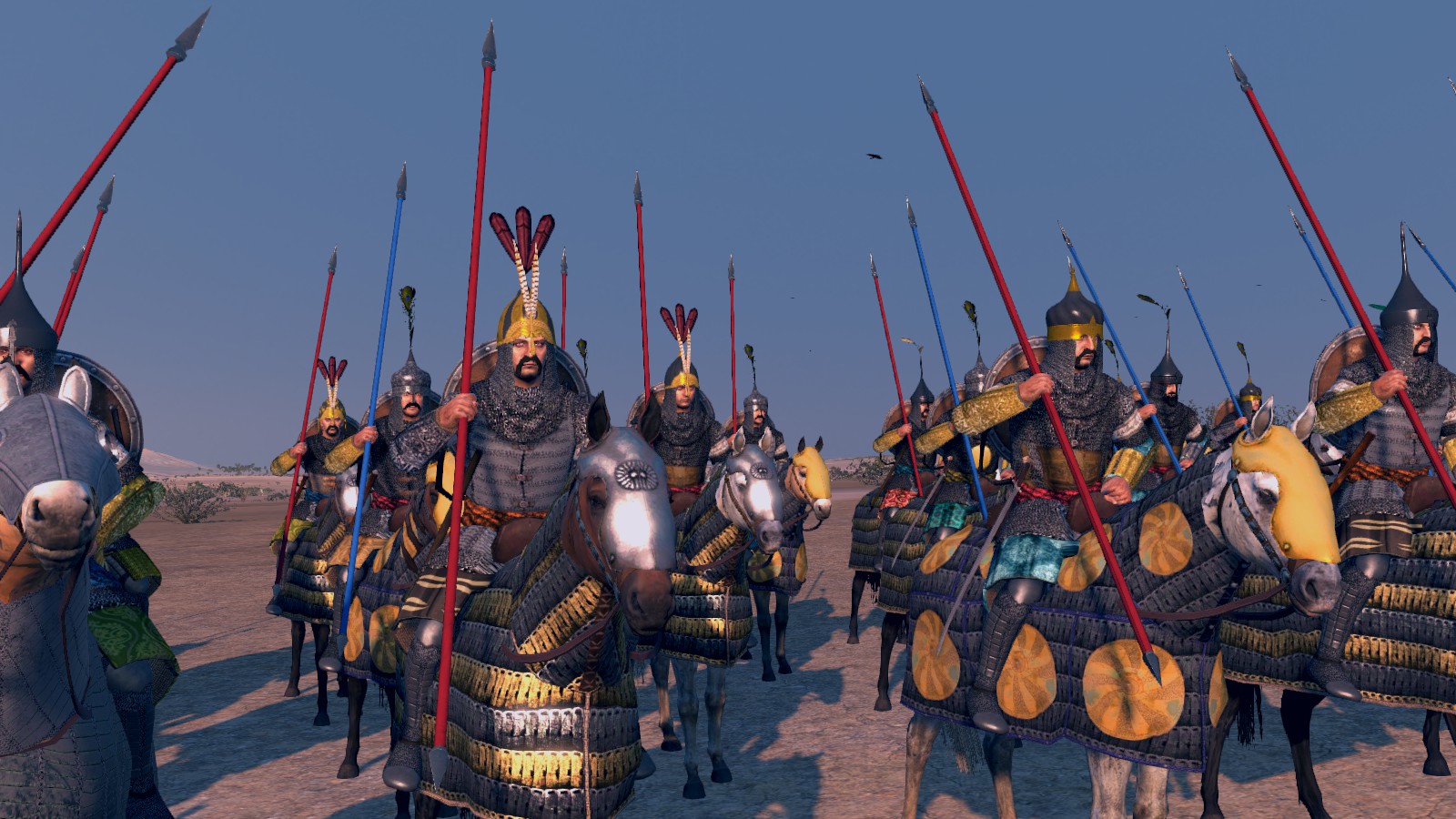
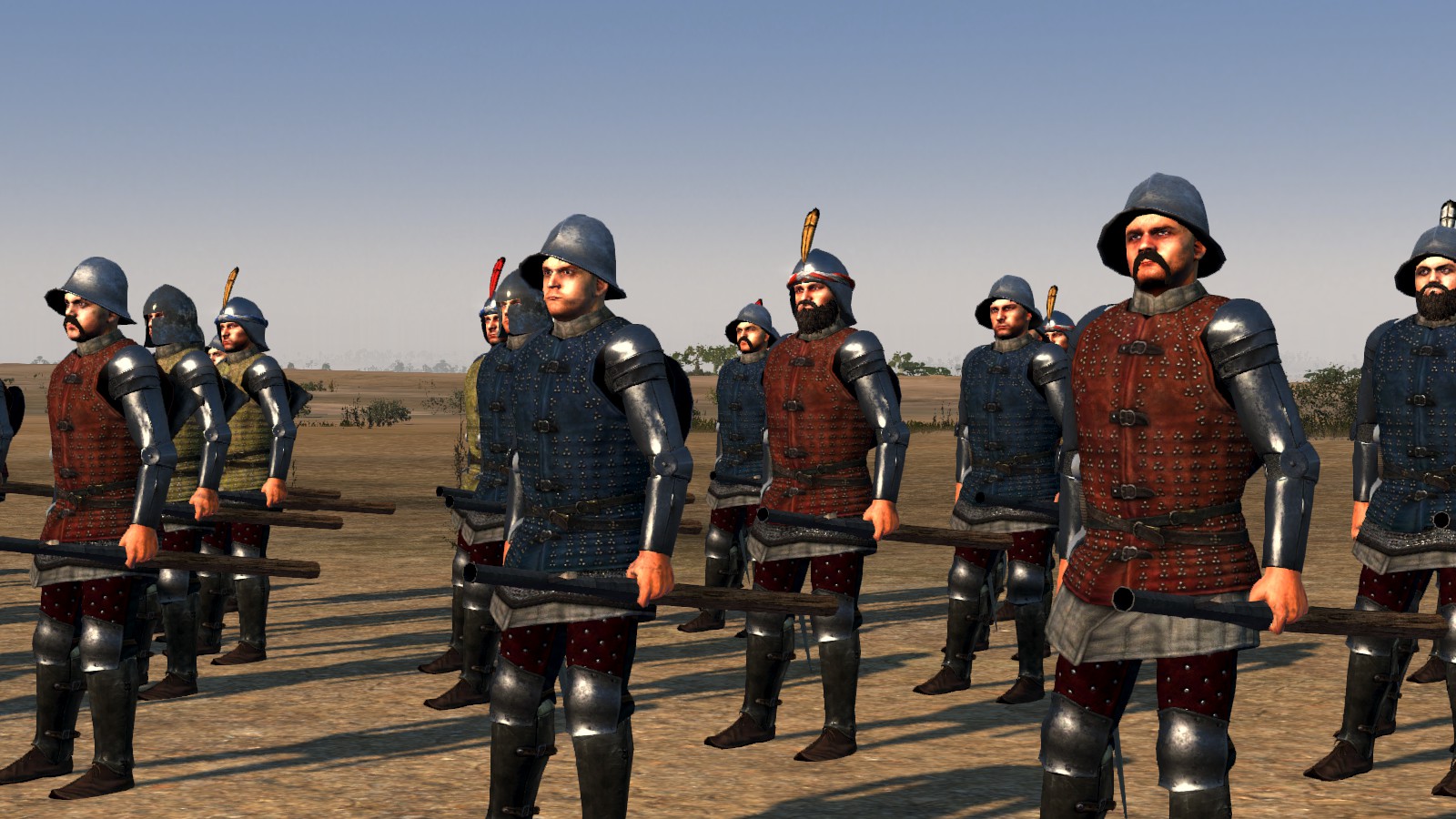



Shouldn't it be a Shahdom, instead of an Empire? Hence the Khwarezm Shahdom? It would be like calling the Abbasid Caliphate the Abbasid Empire, doesn't seem right, since the title is Caliph and not Emperor. Same with the Khwarezm Shahs.
Why is the Ottoman Empire not called the Ottoman Sultanate then? Just curious.
because the Ottoman Sultan is also a Caliph, but not all Muslims recognized this Caliphate.
A sultanate is also thought of as a state or a client state that follows the Caliphate. and since the Ottoman grew well beyond a Sultanate, they were recognized as a Caliphate or an Empire, depending on your opinion of the legality of the Caliphate.
One thing: I think Indian elephants dont have tusks. I may be picky, but its just something I saw and thought is quite off. :P
Female indian elephants do not have tusks but males have.
some of these units are missing in the mod when i played it, like these guys have no mace infantry at all...